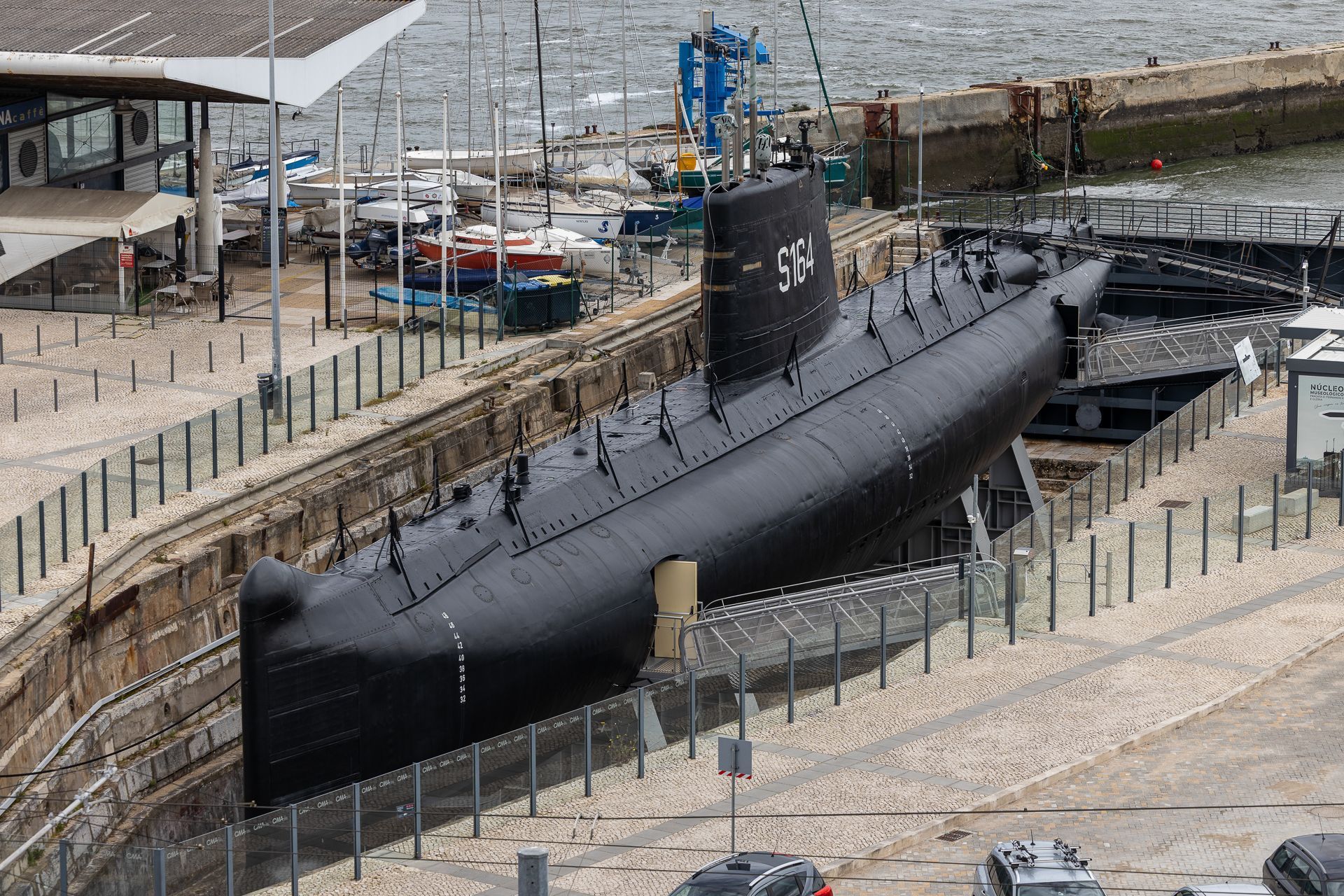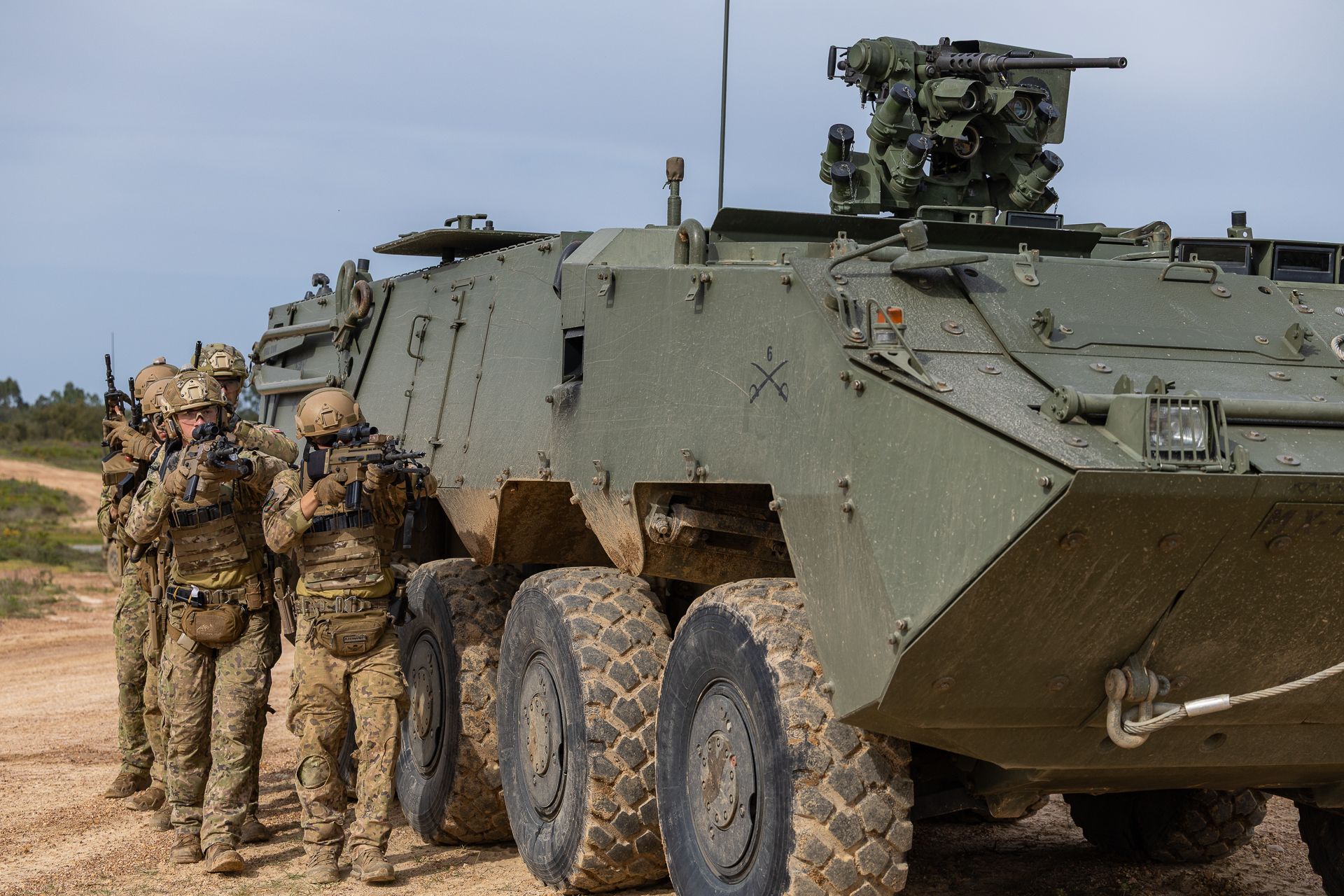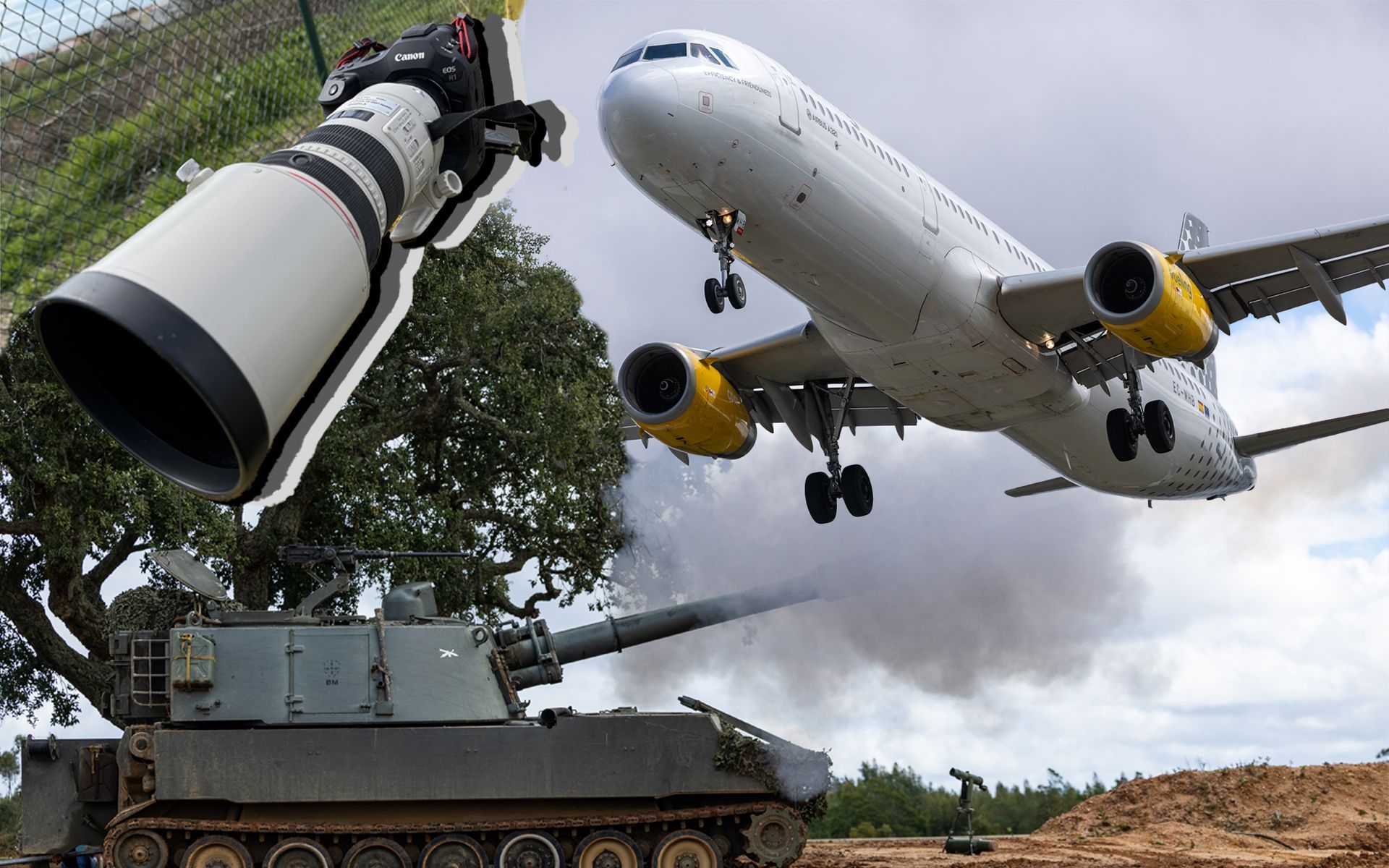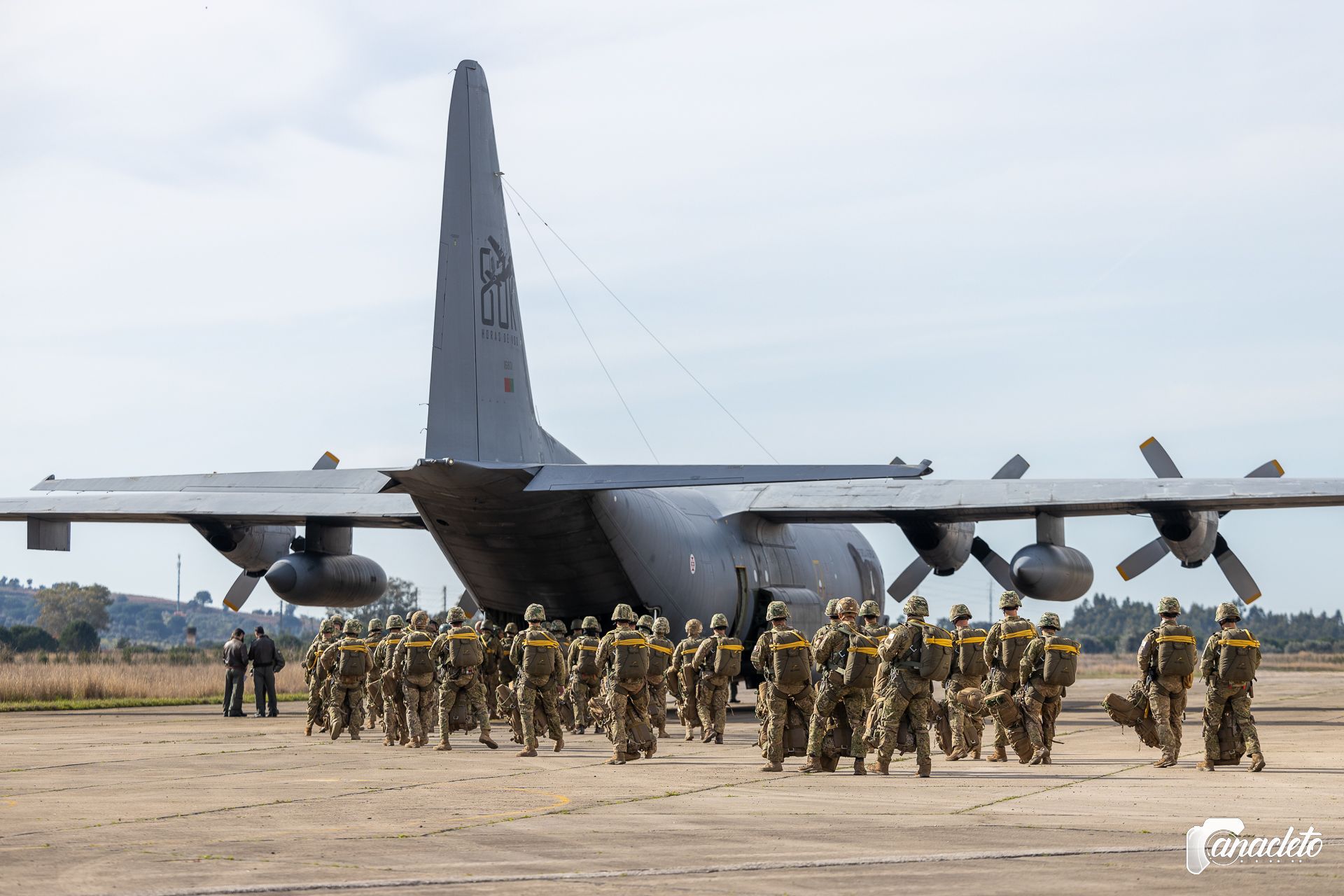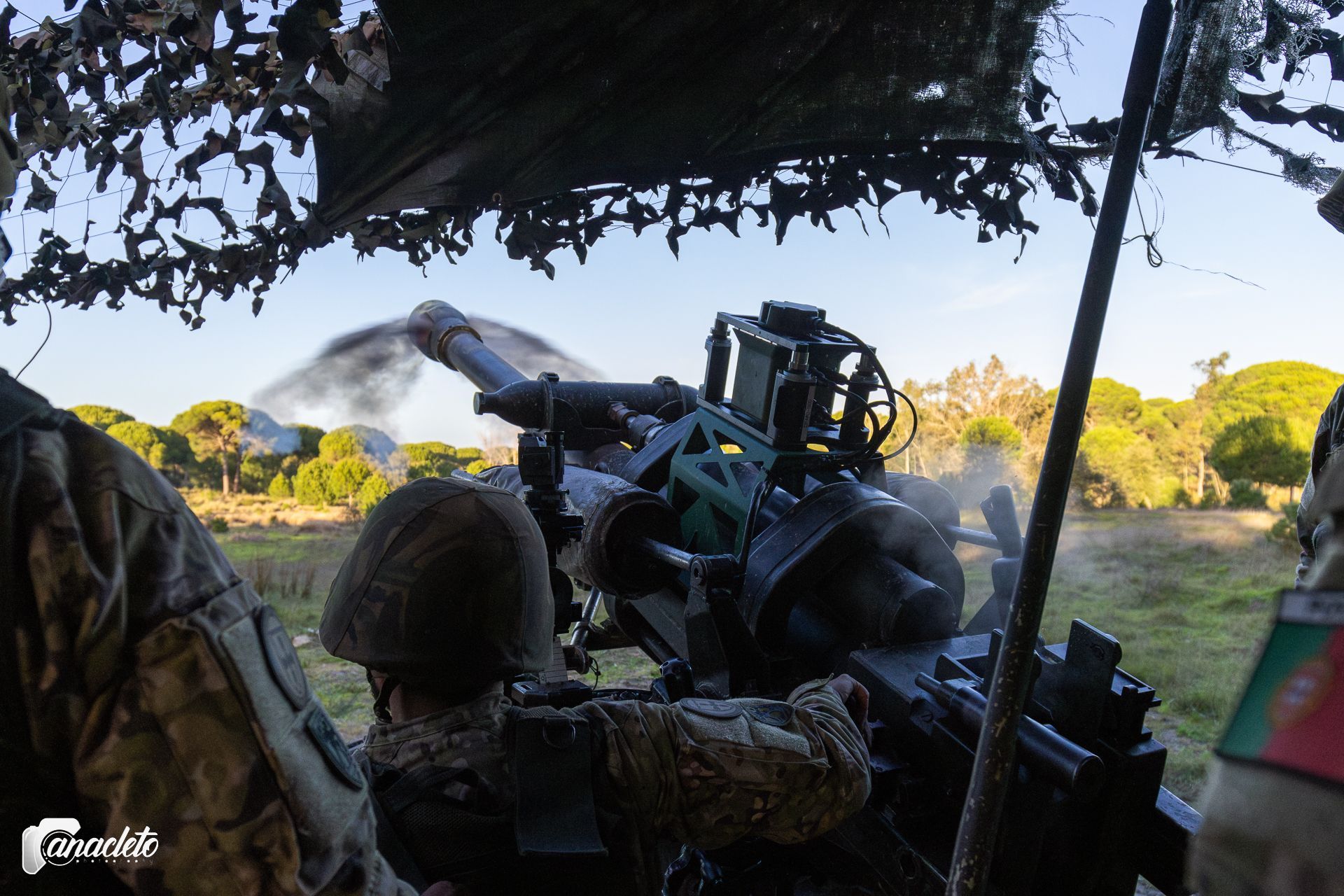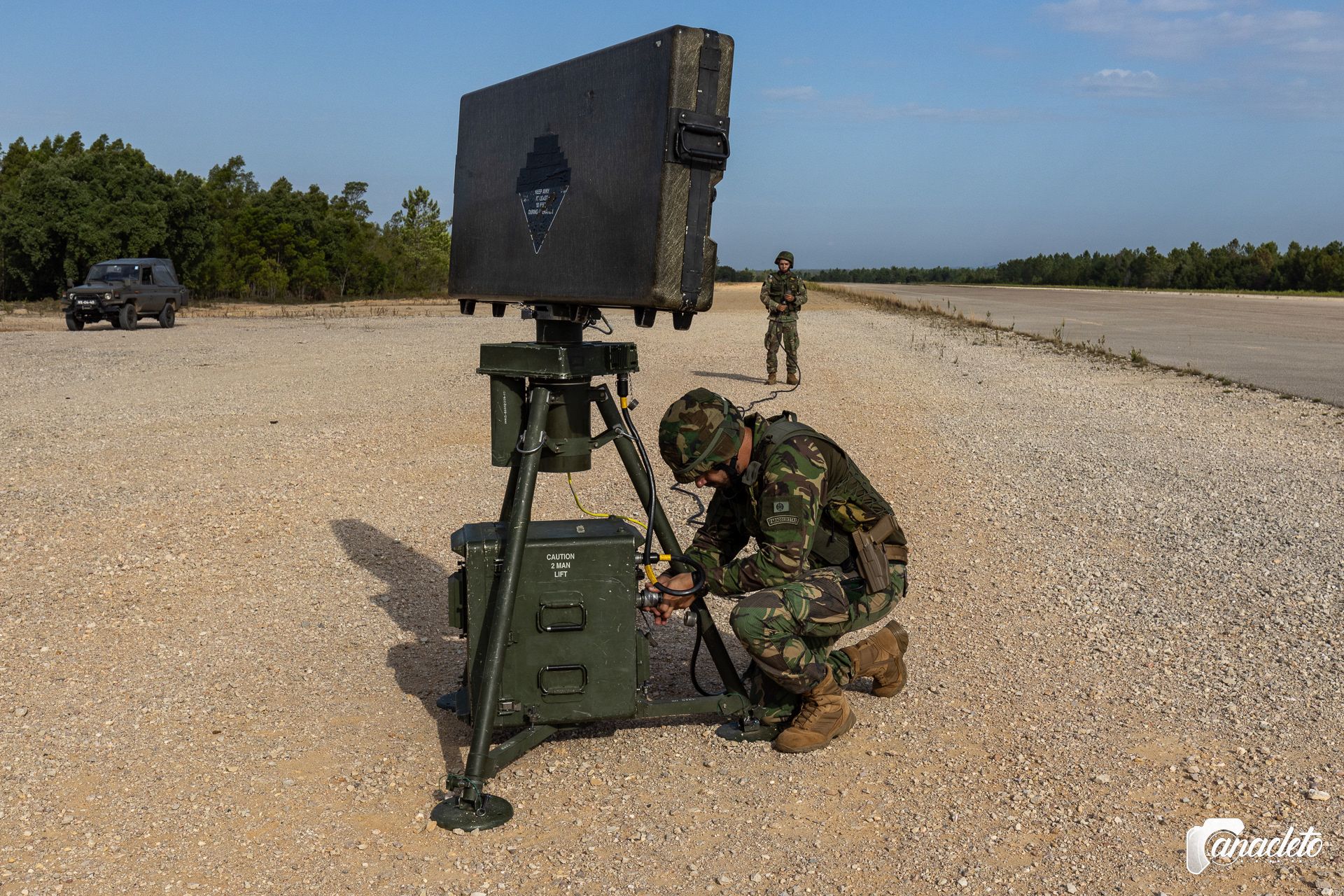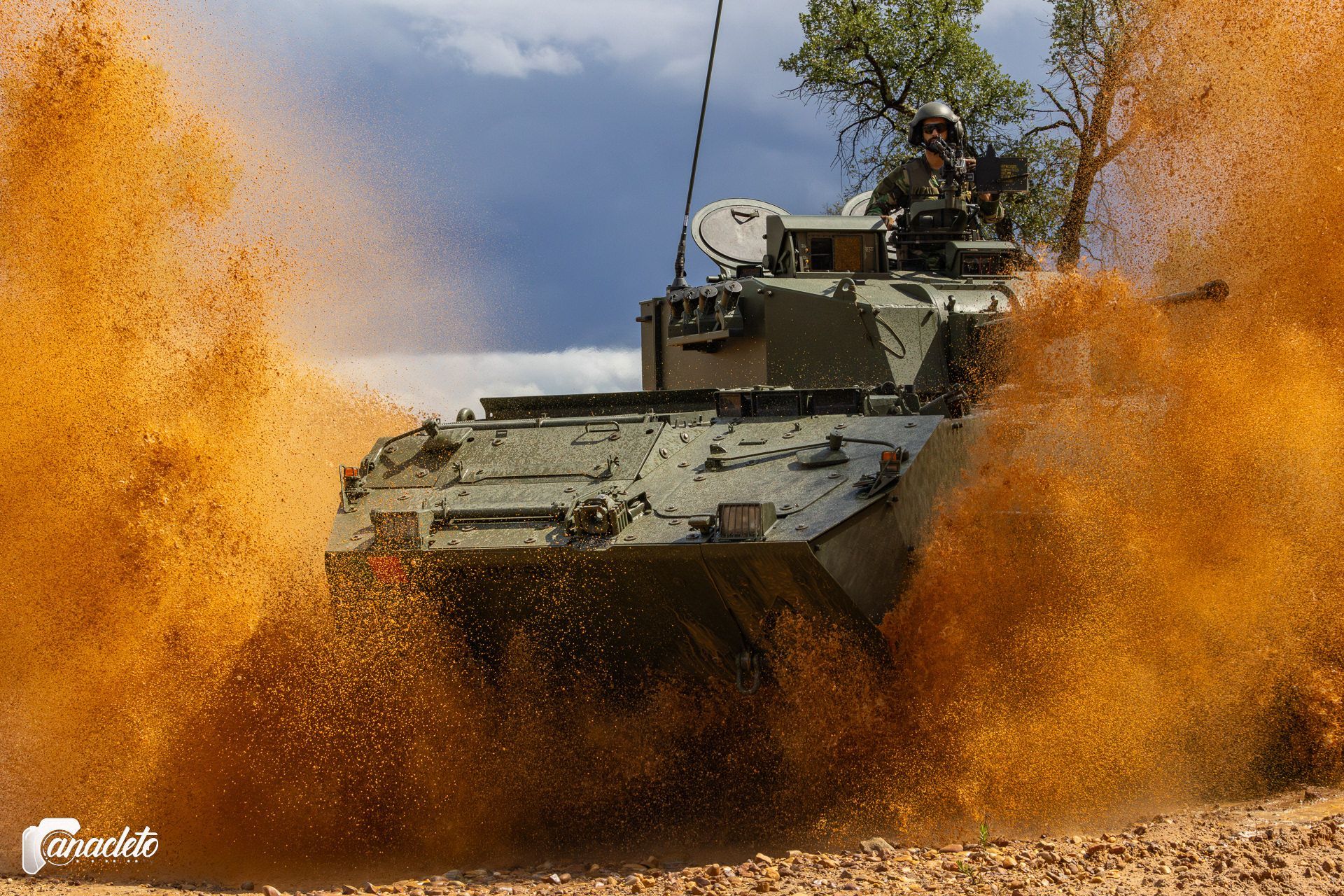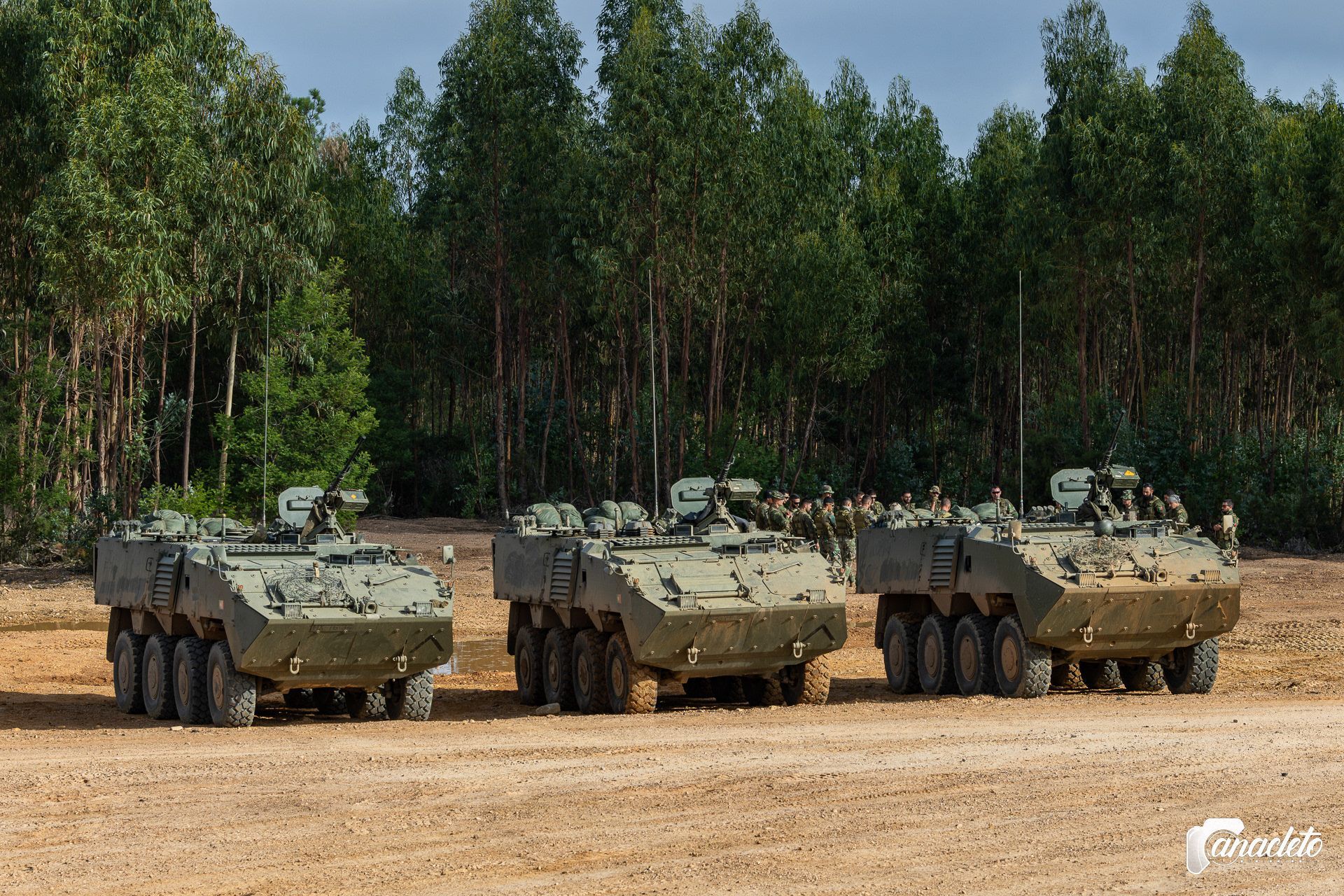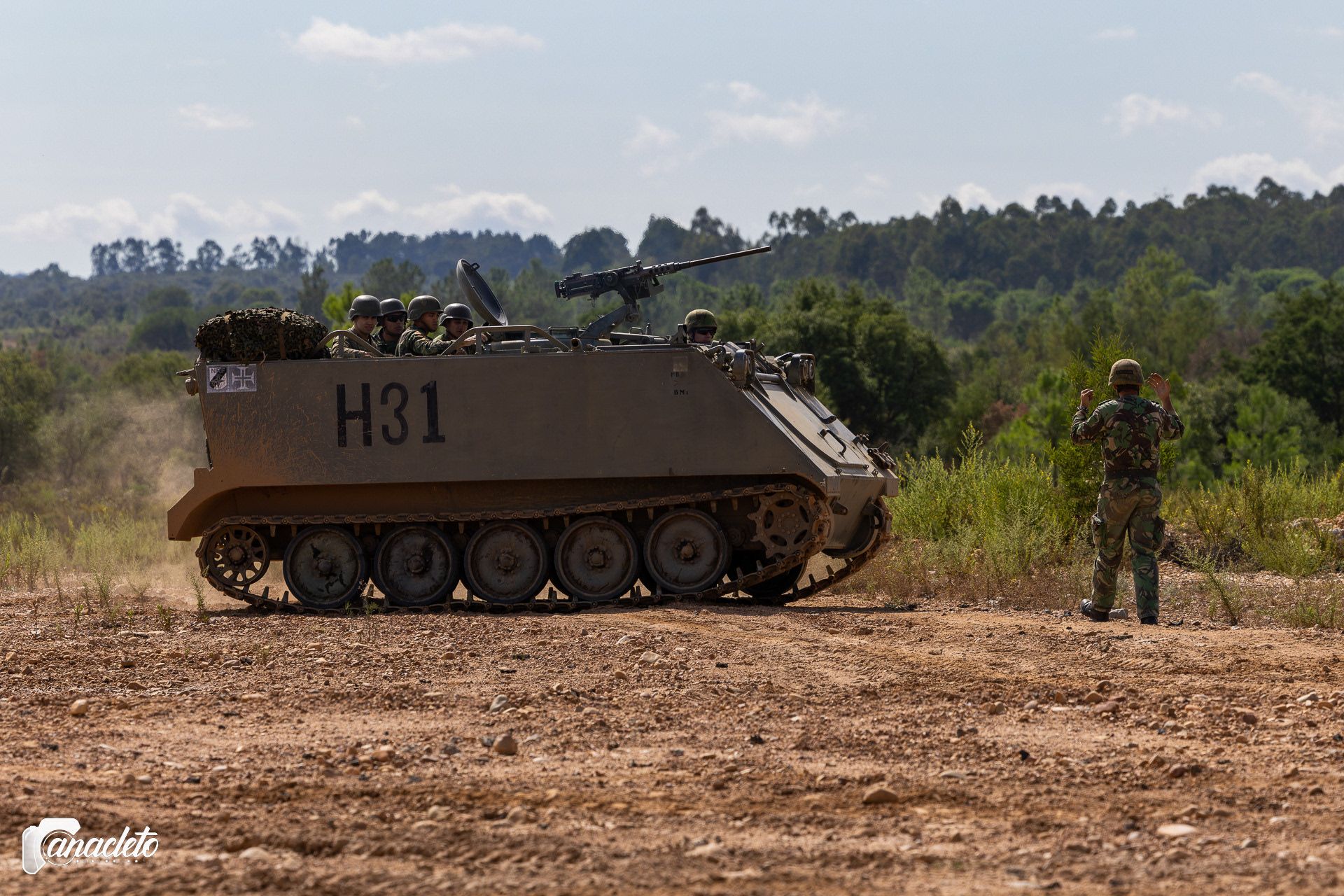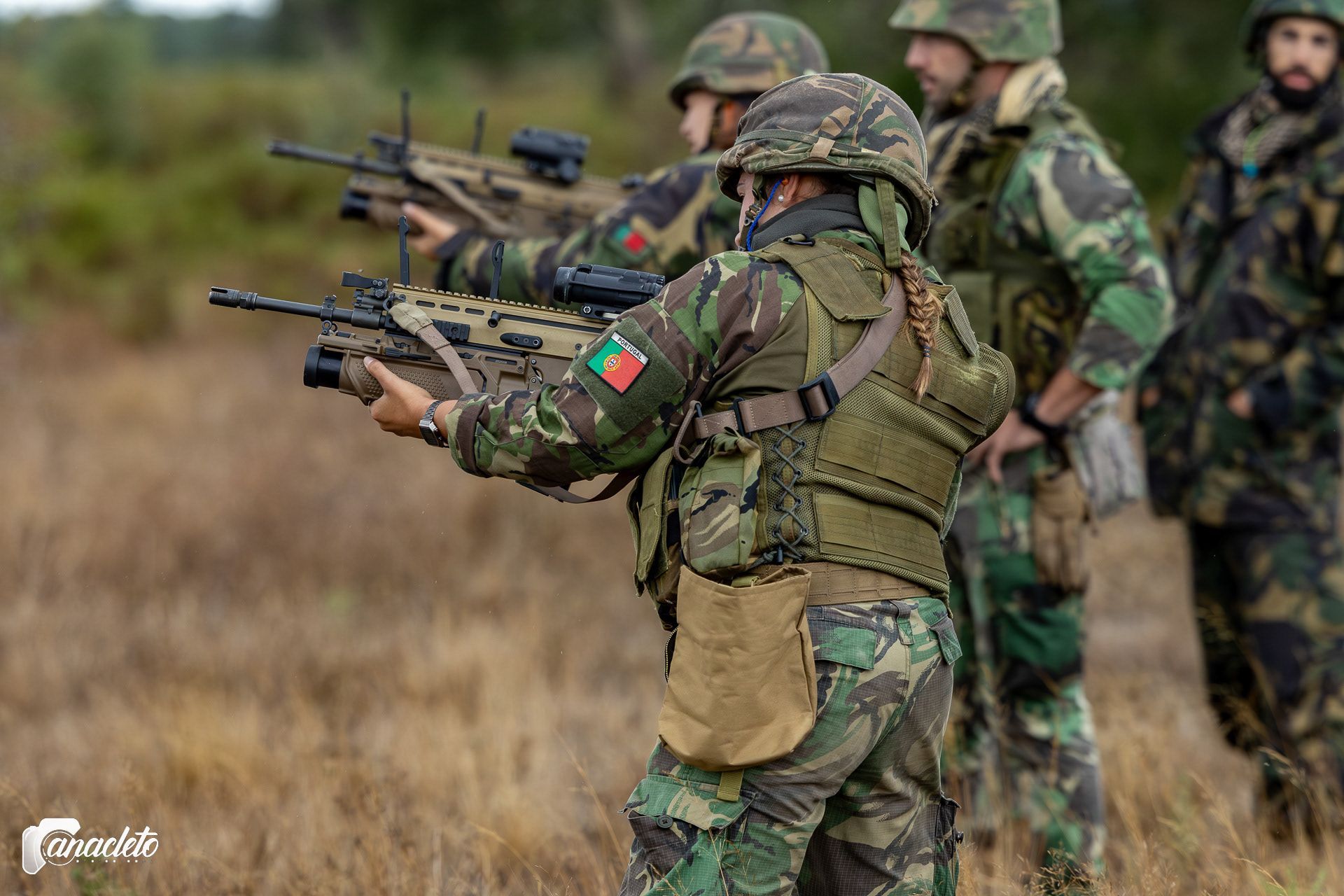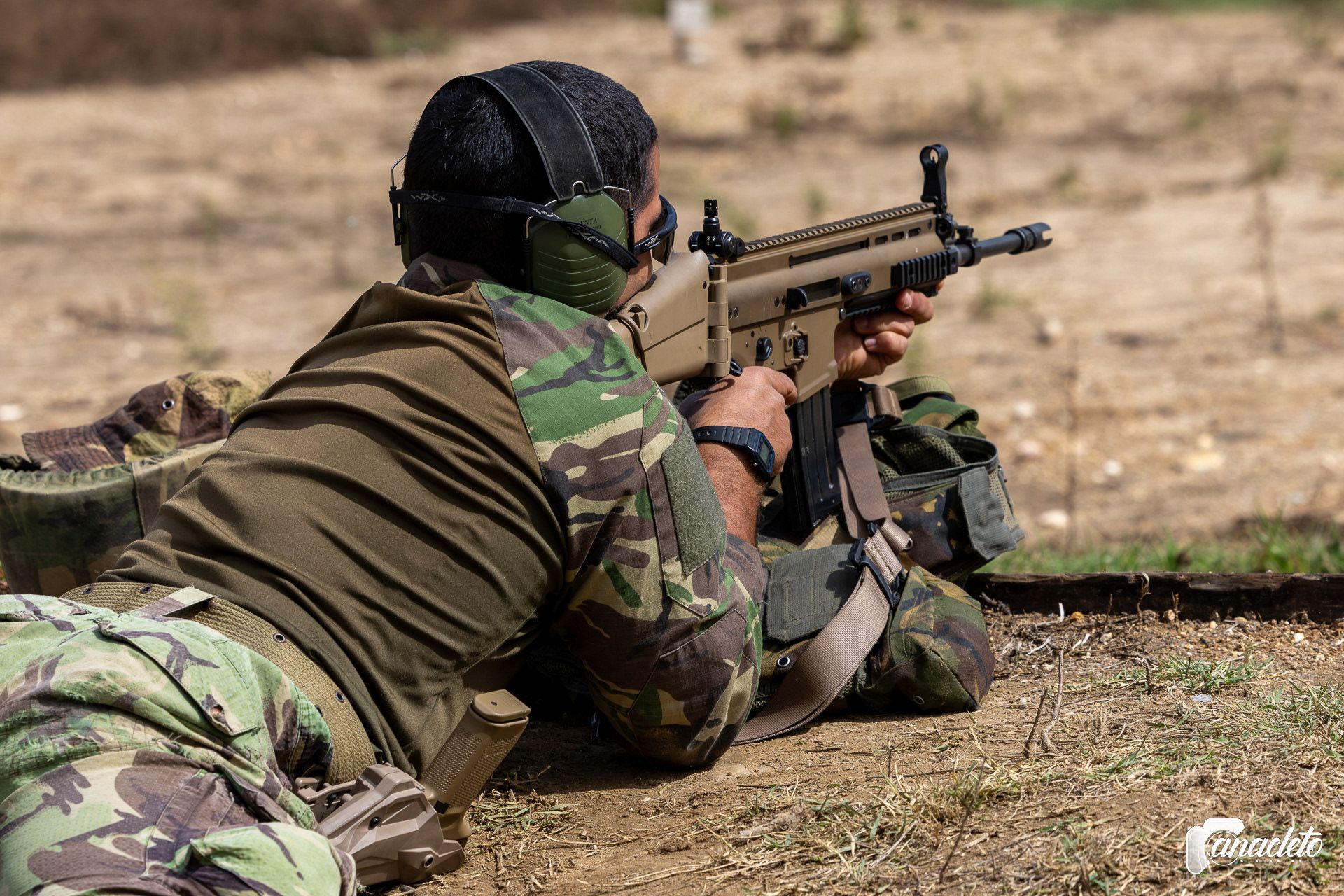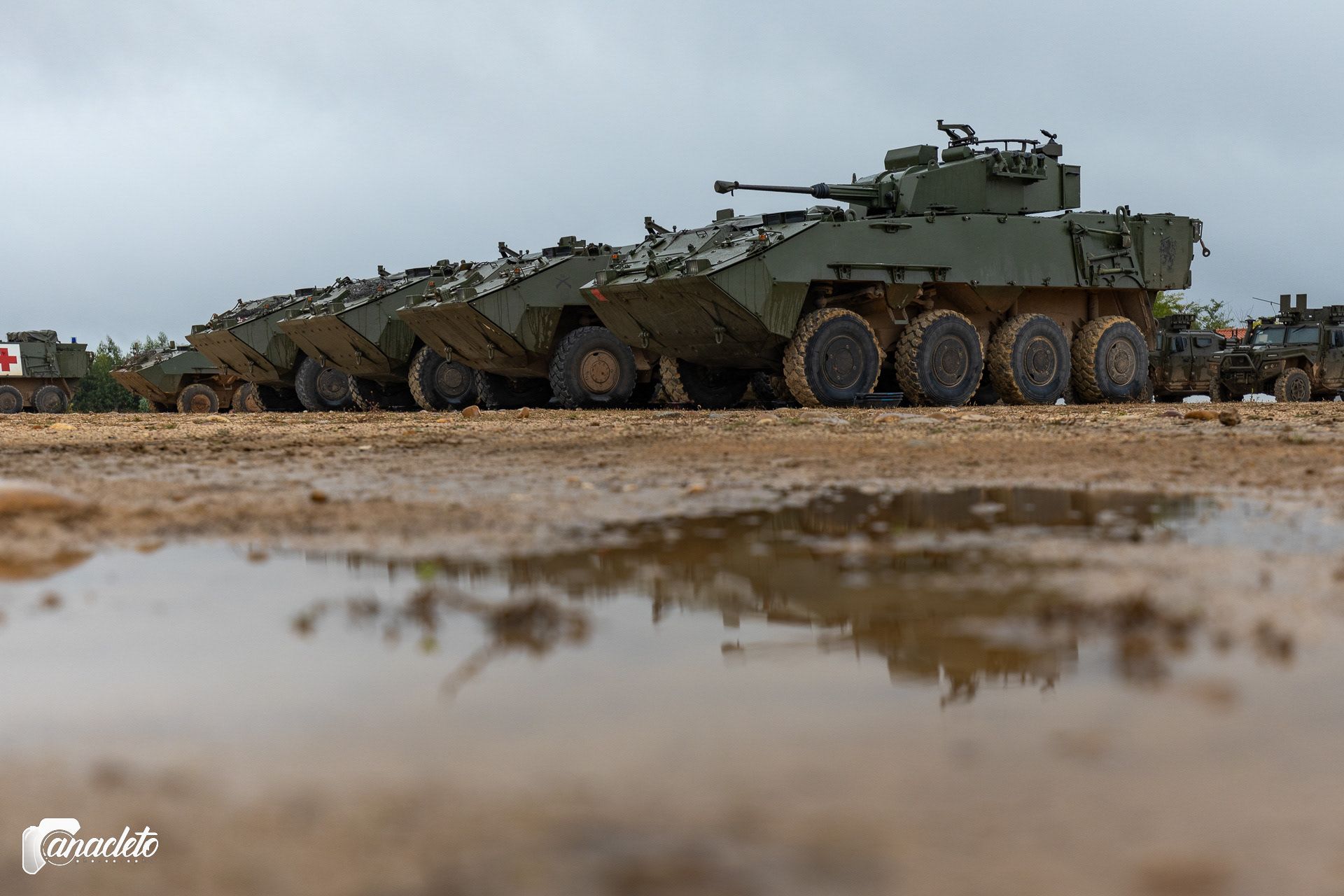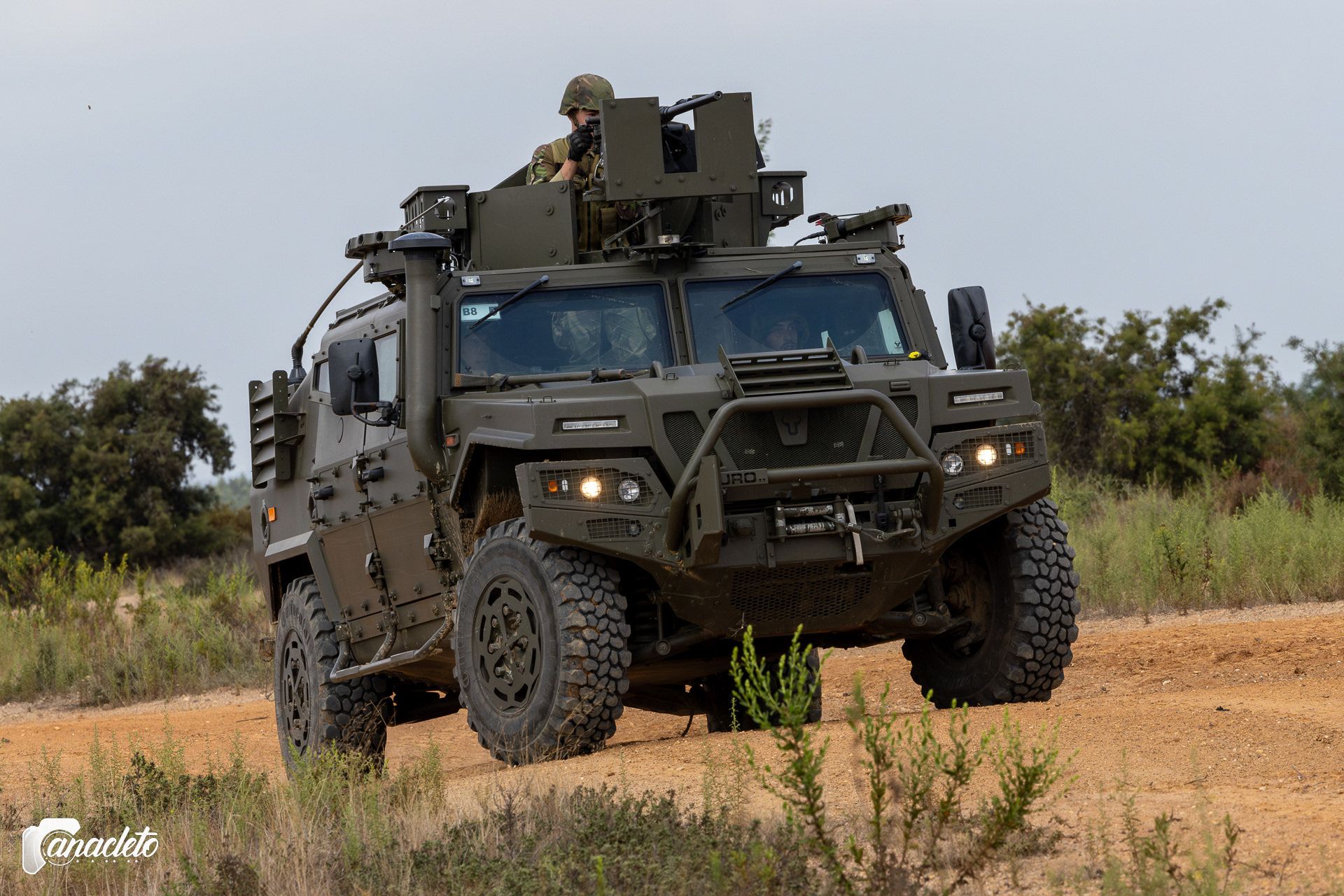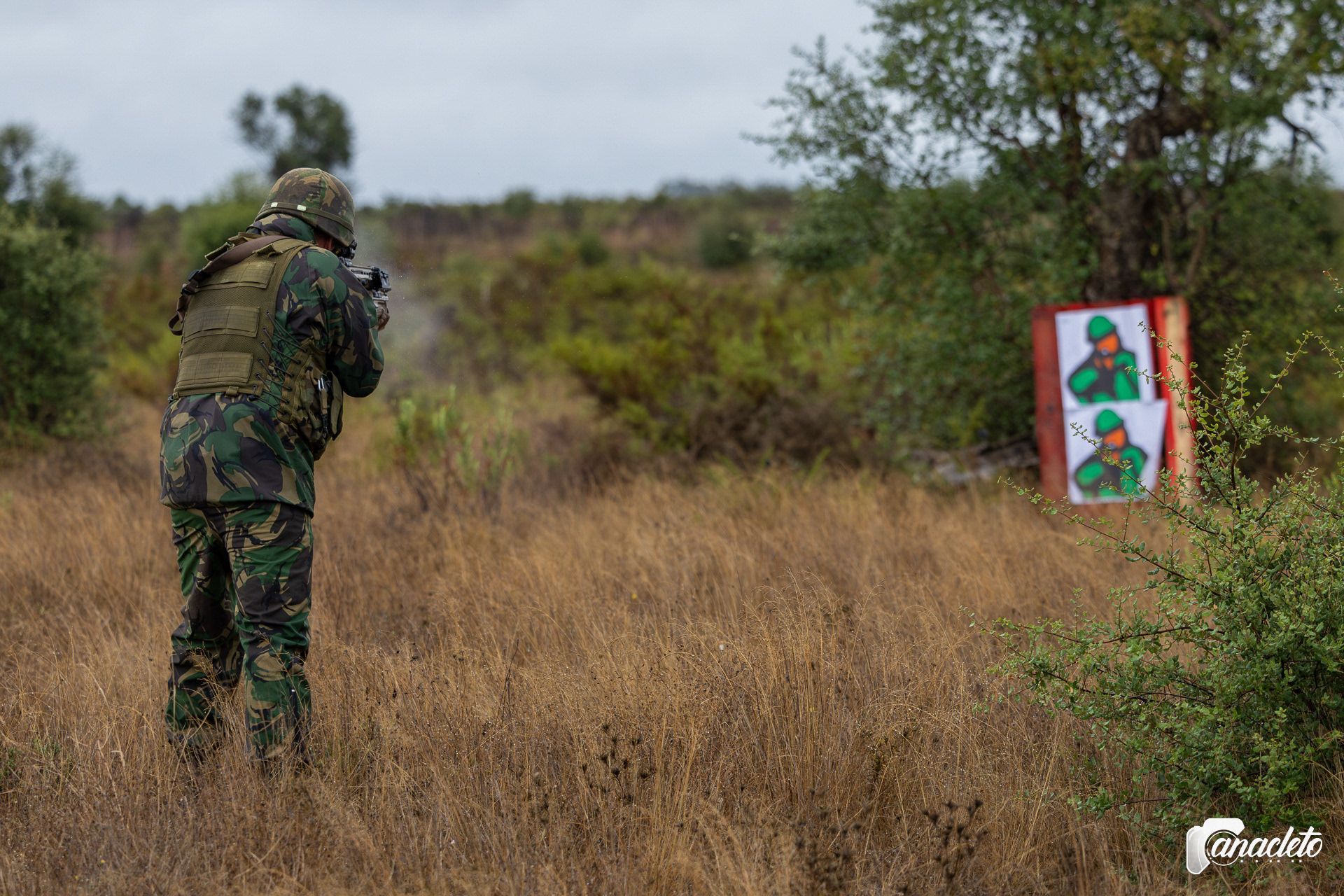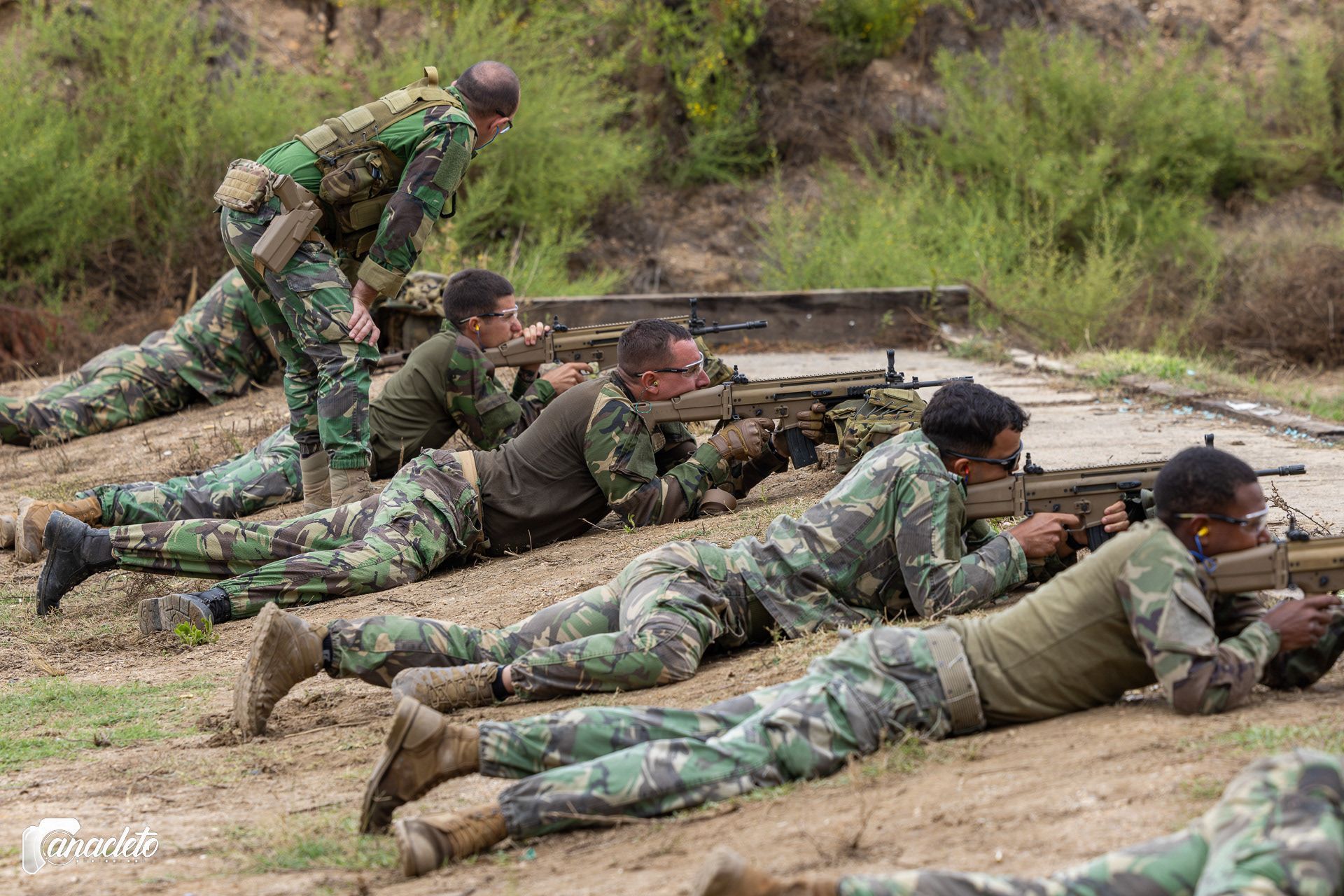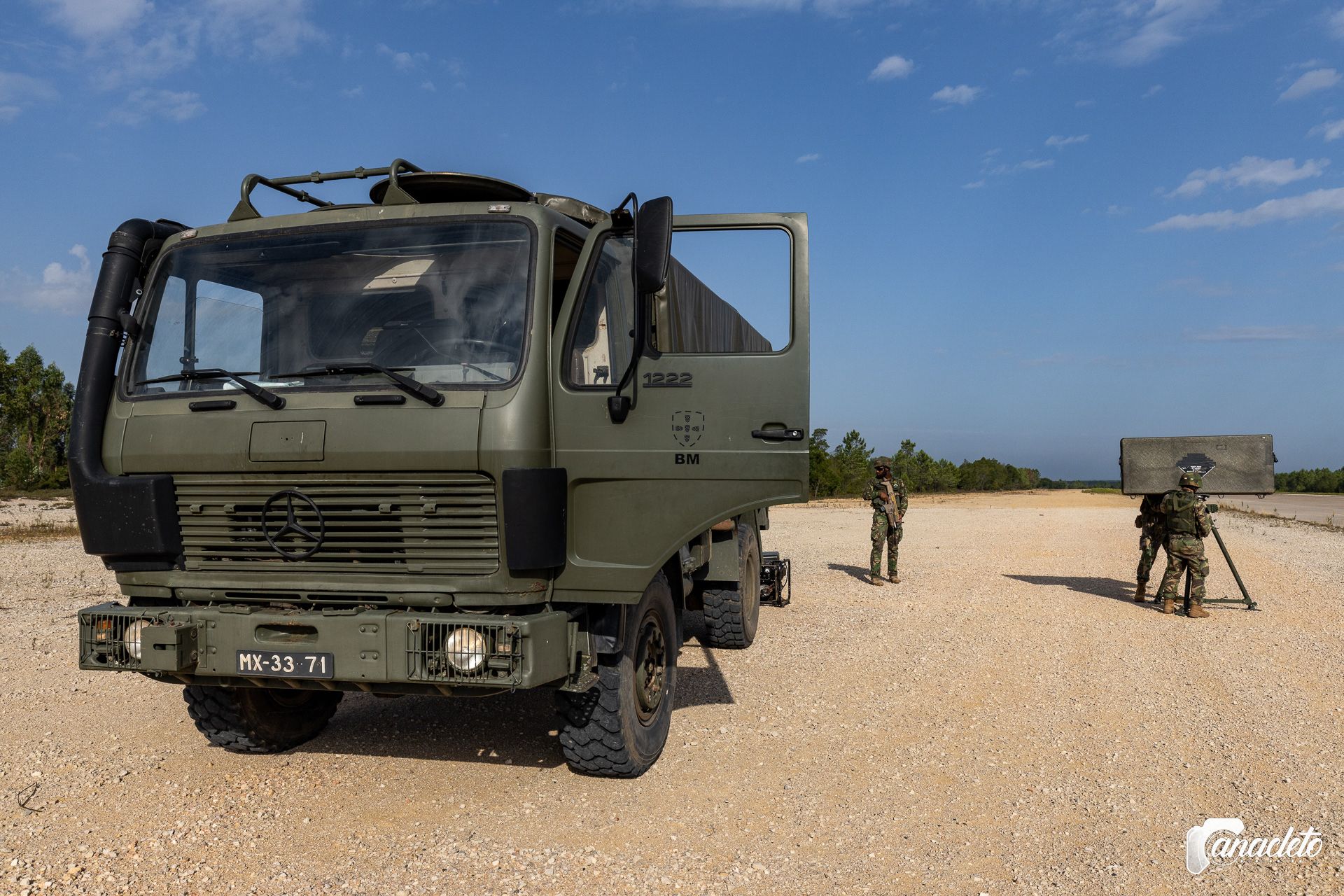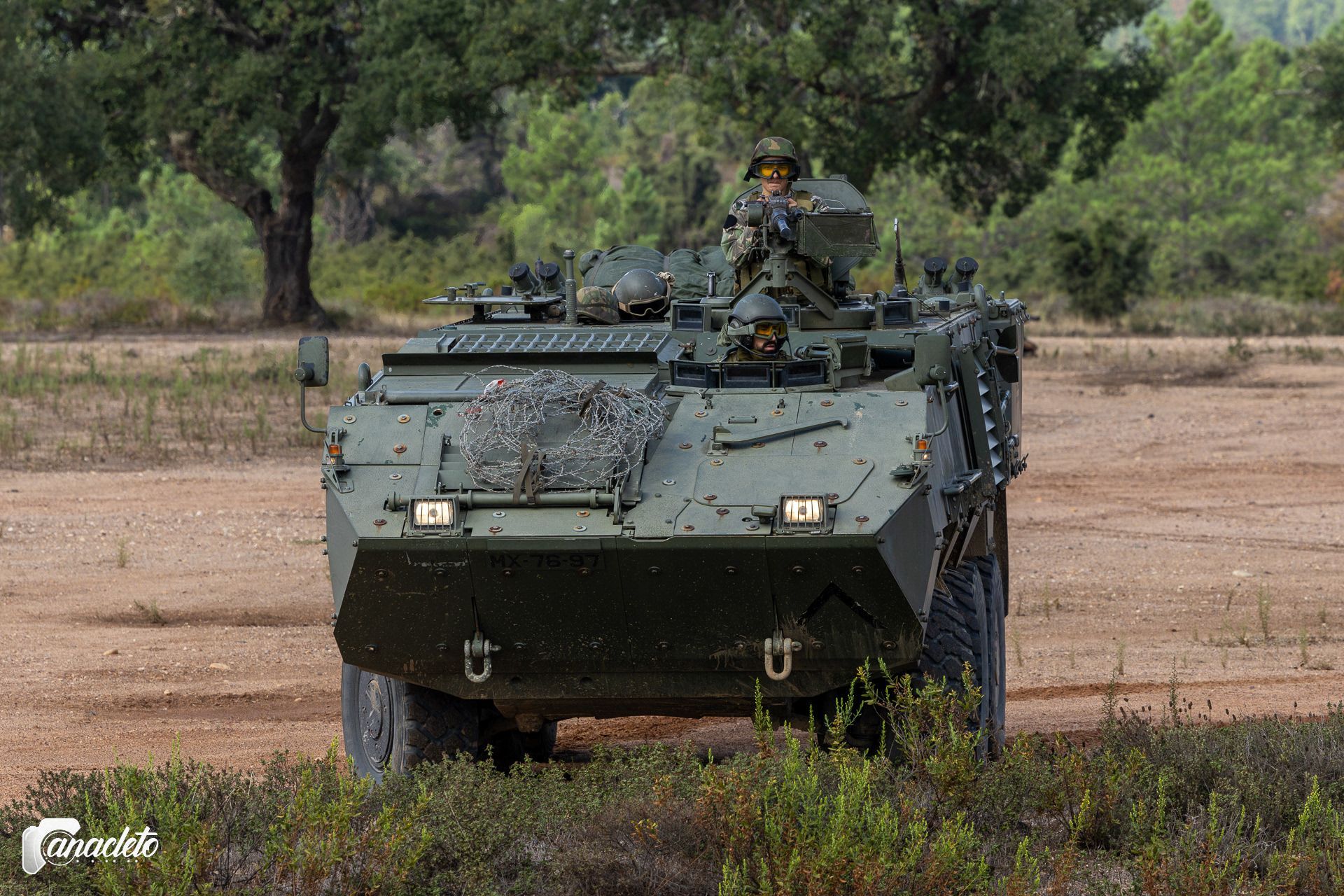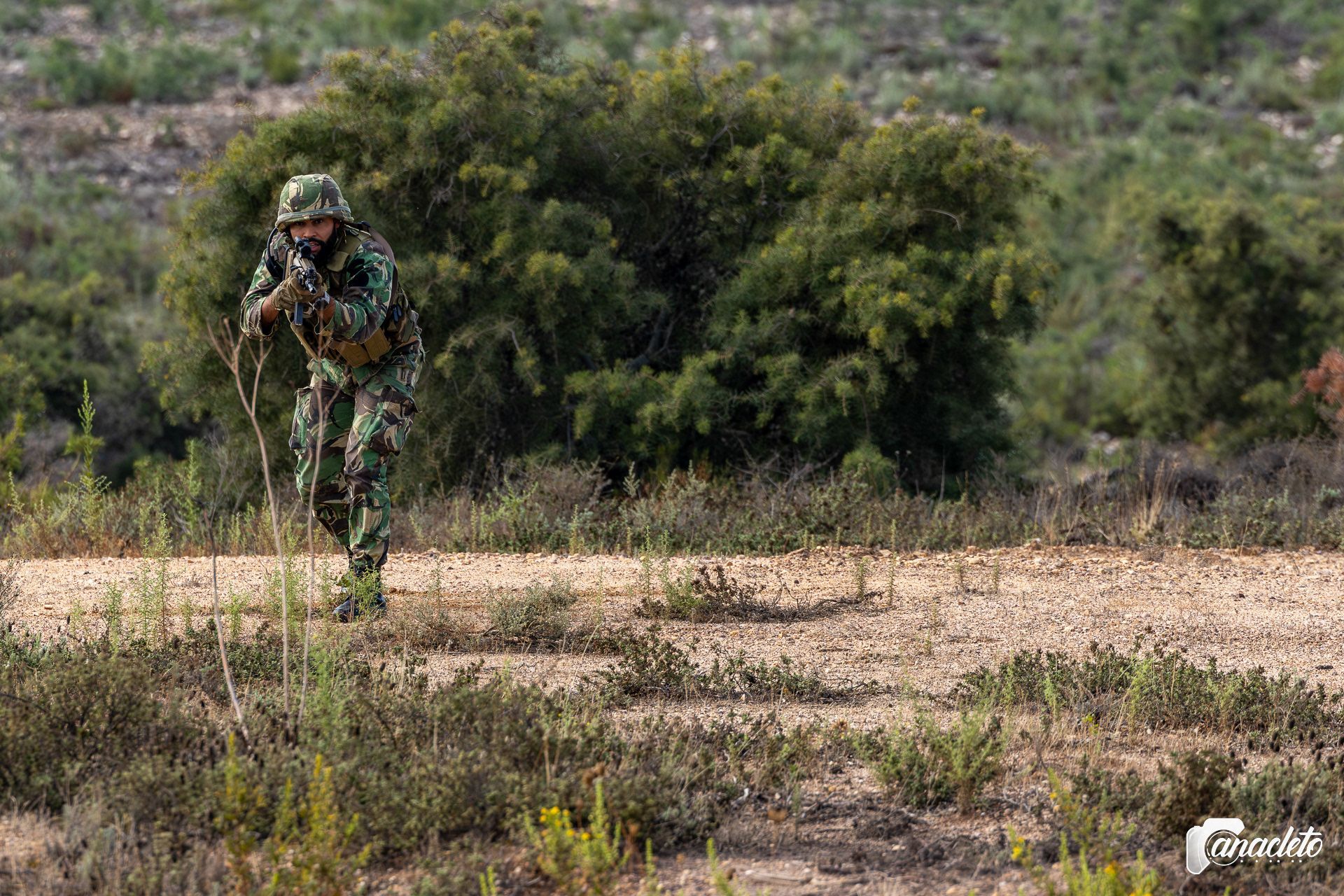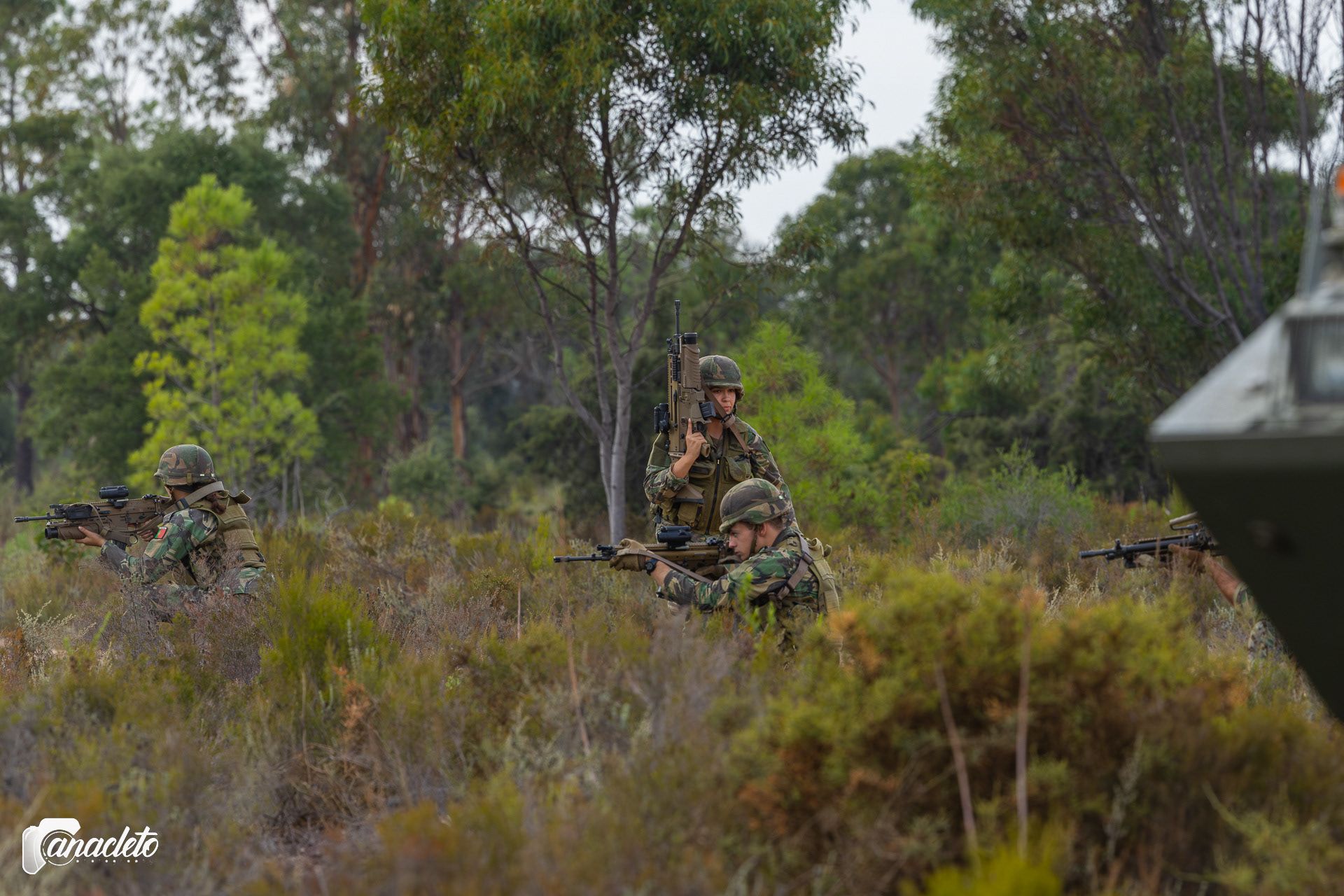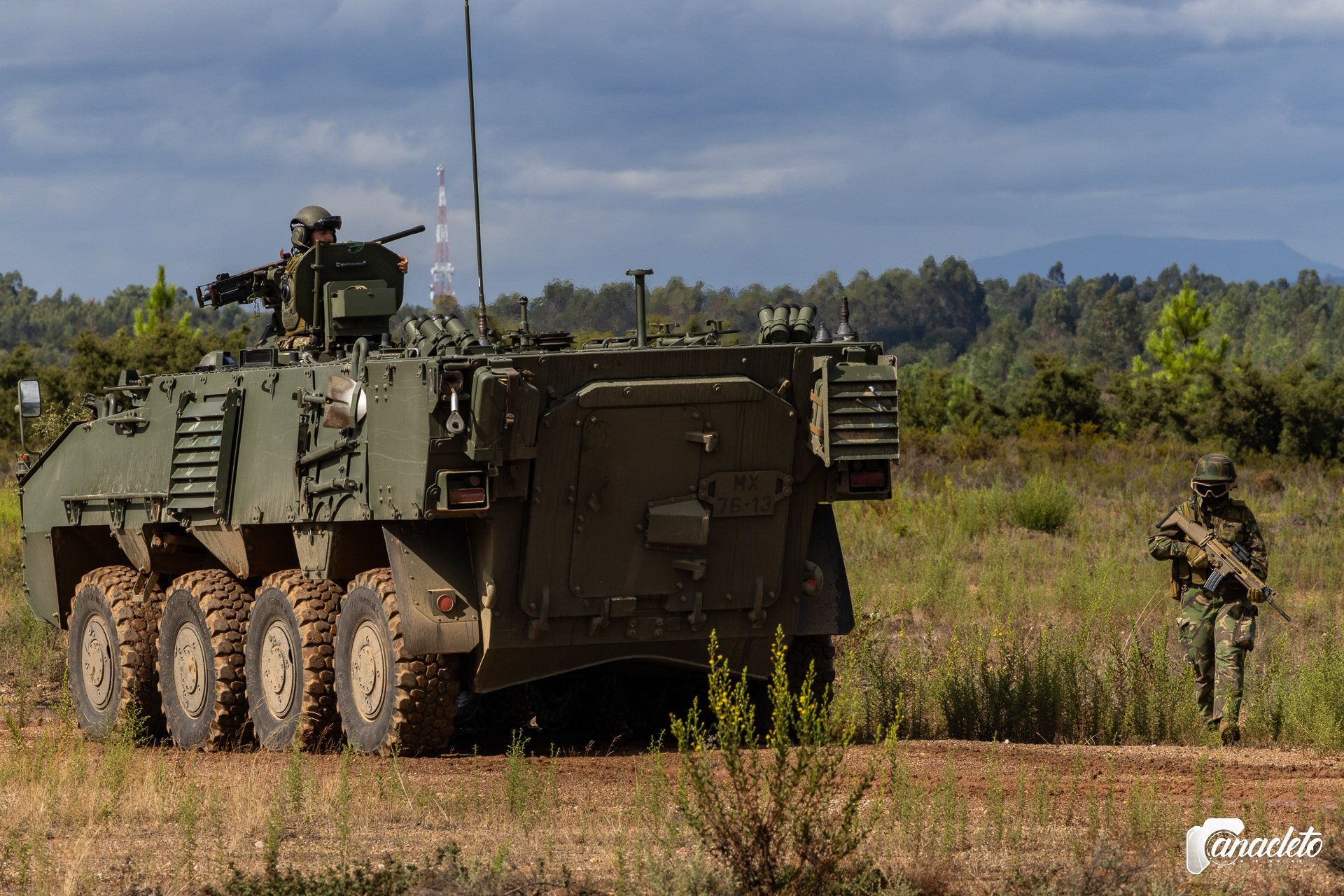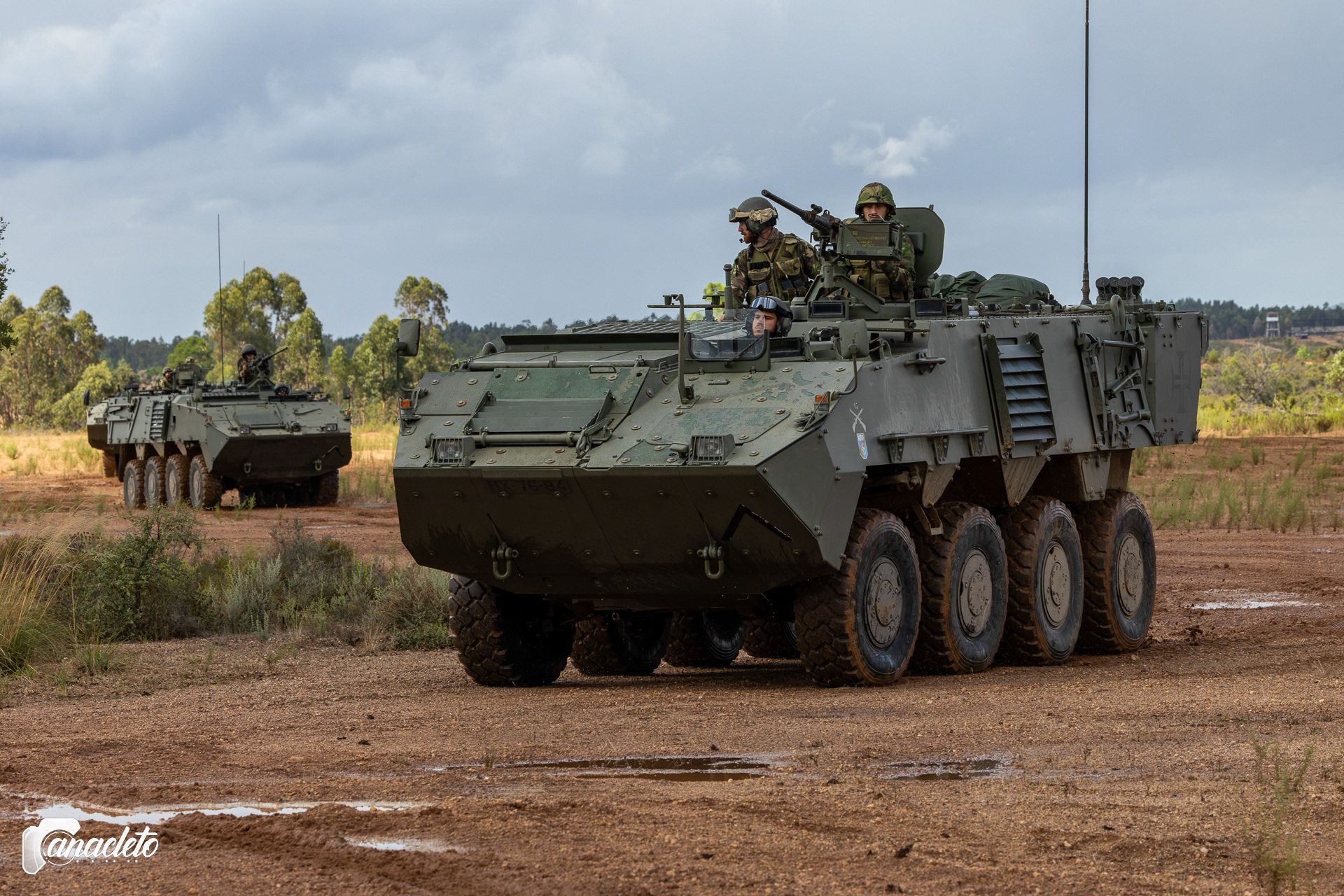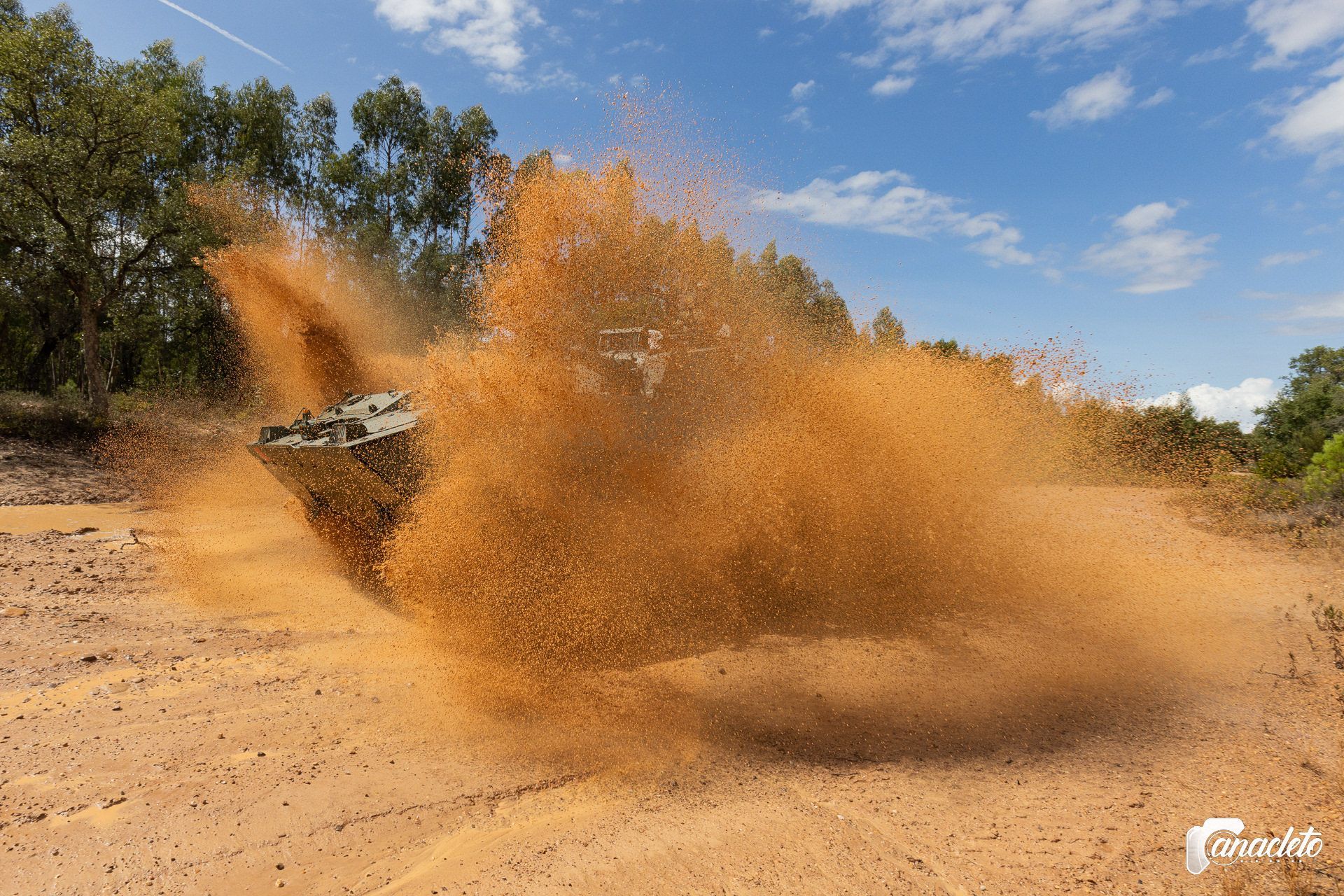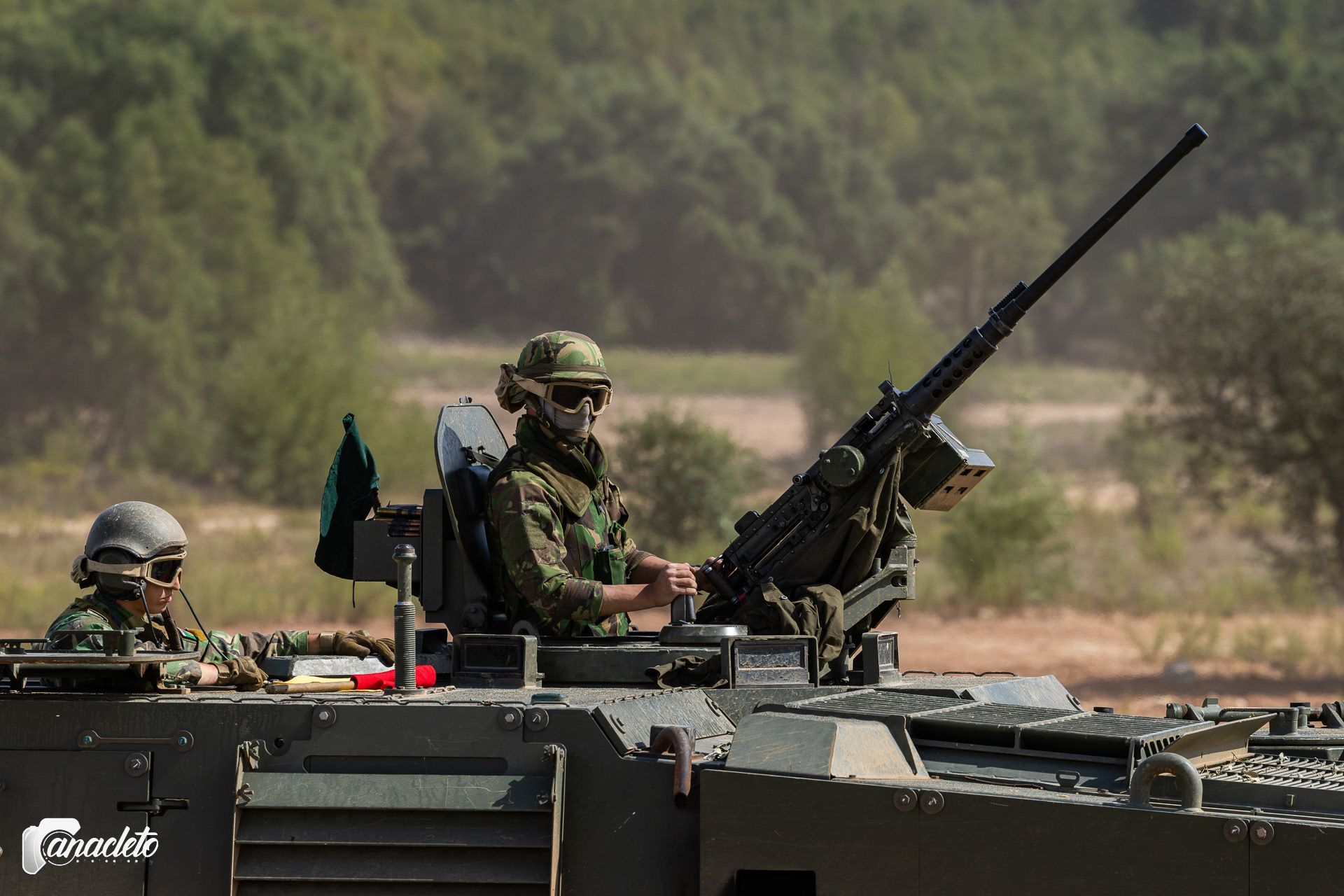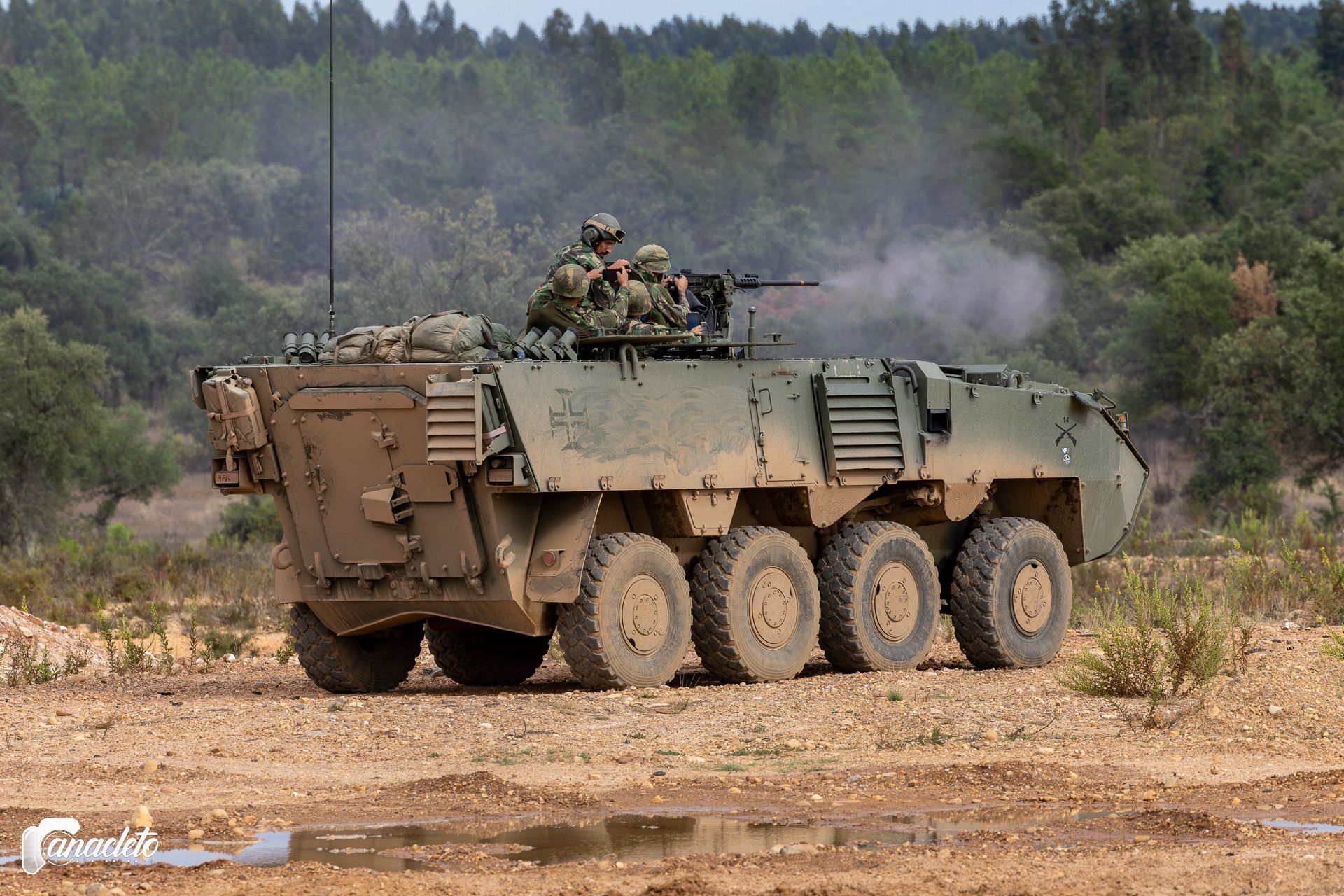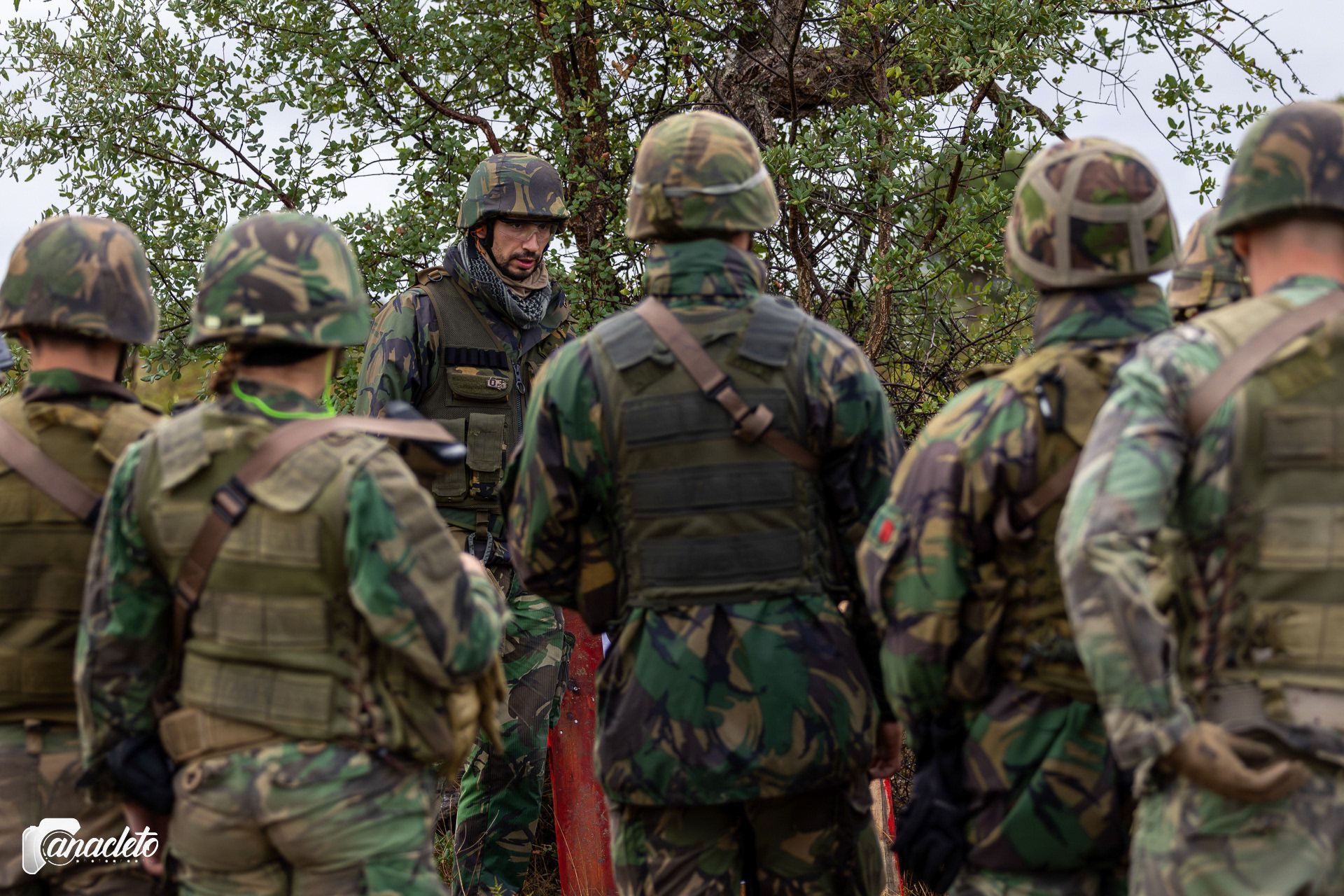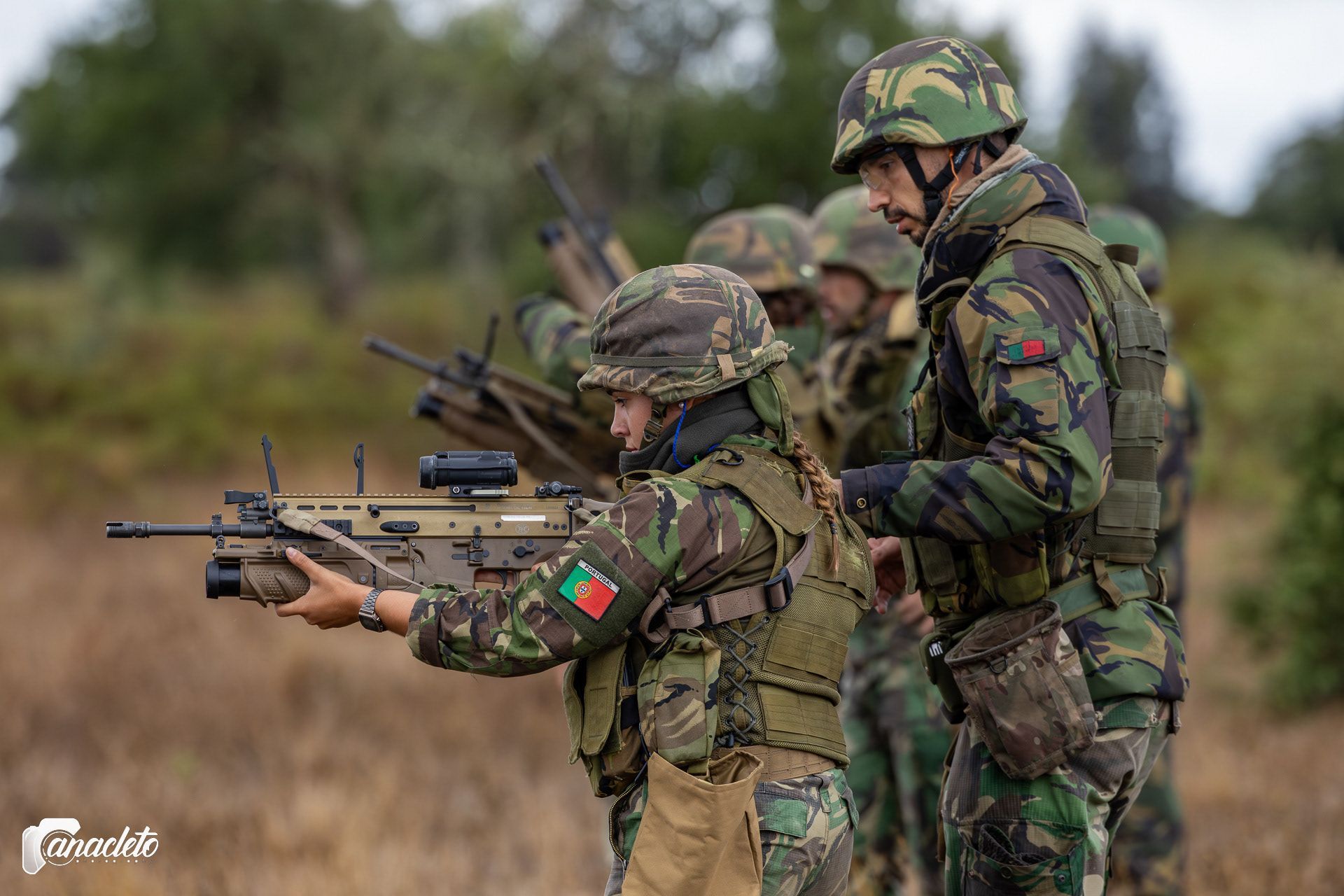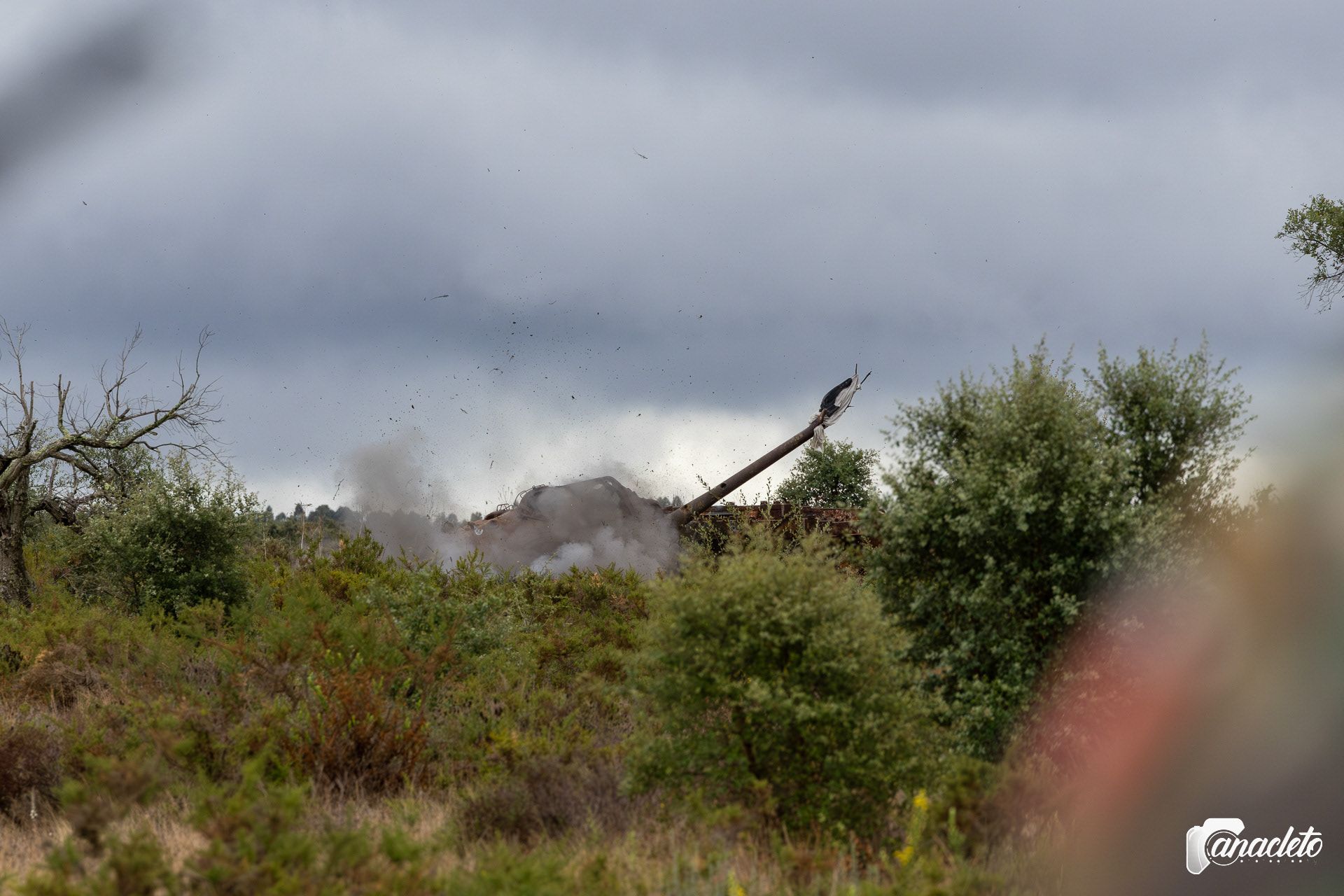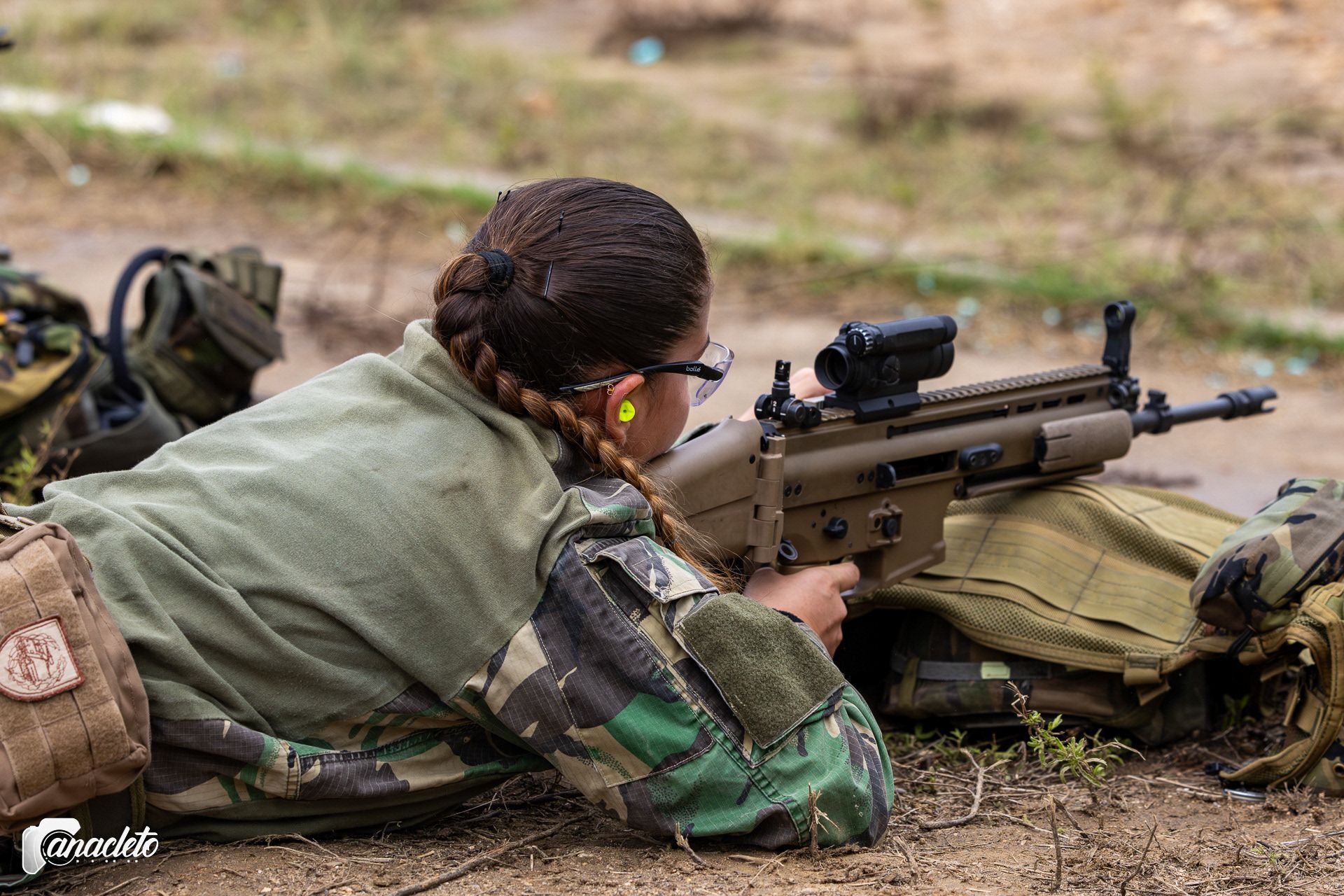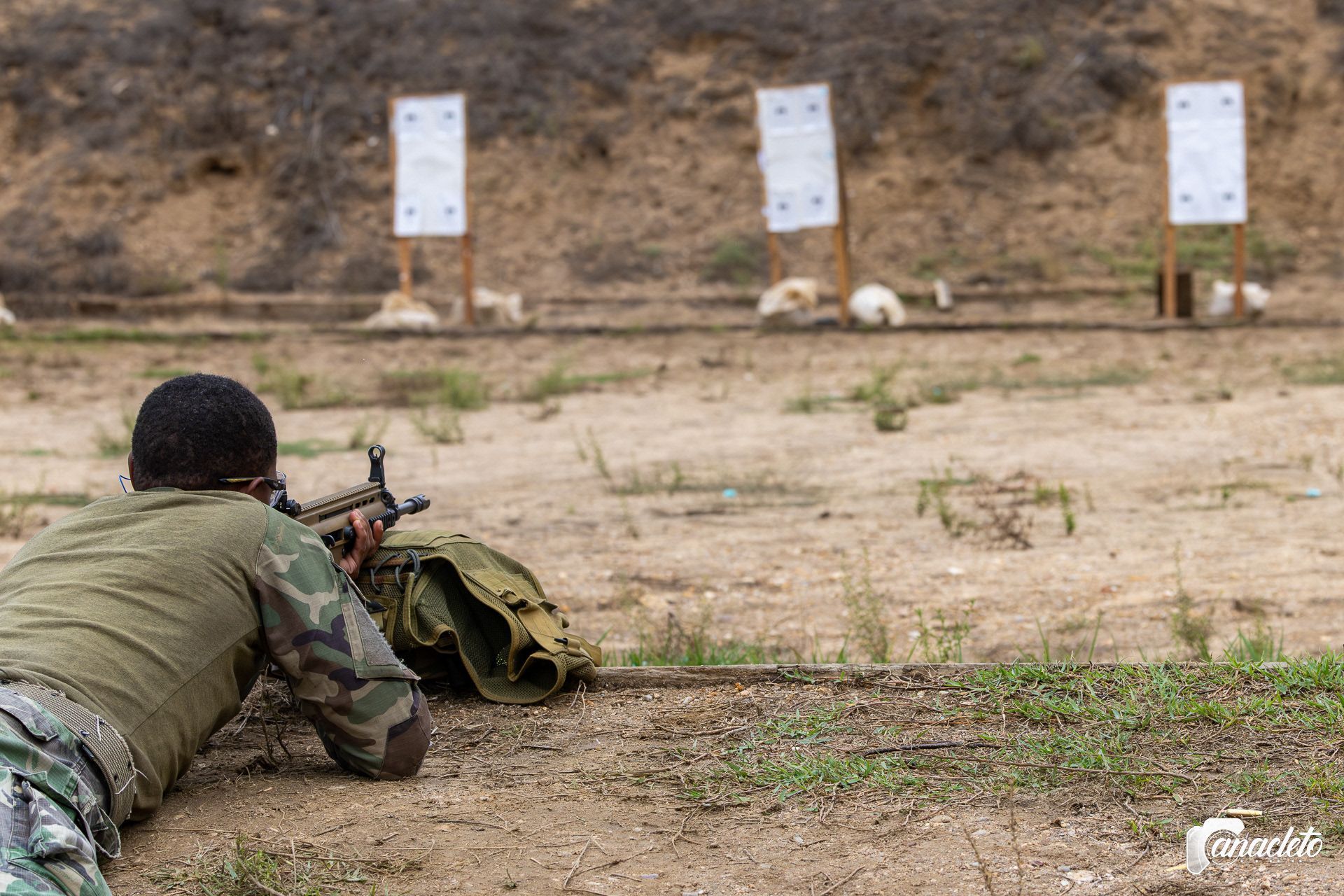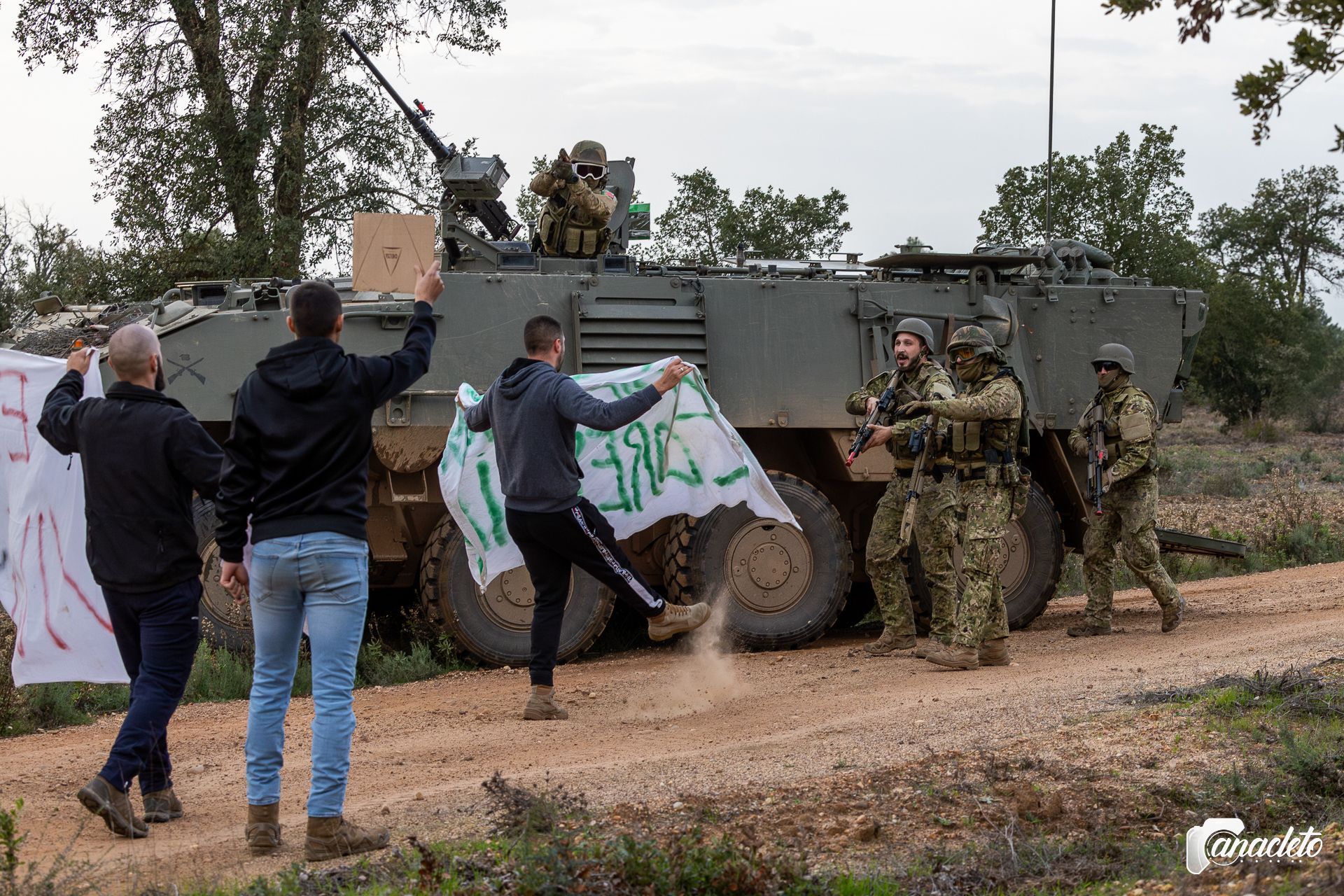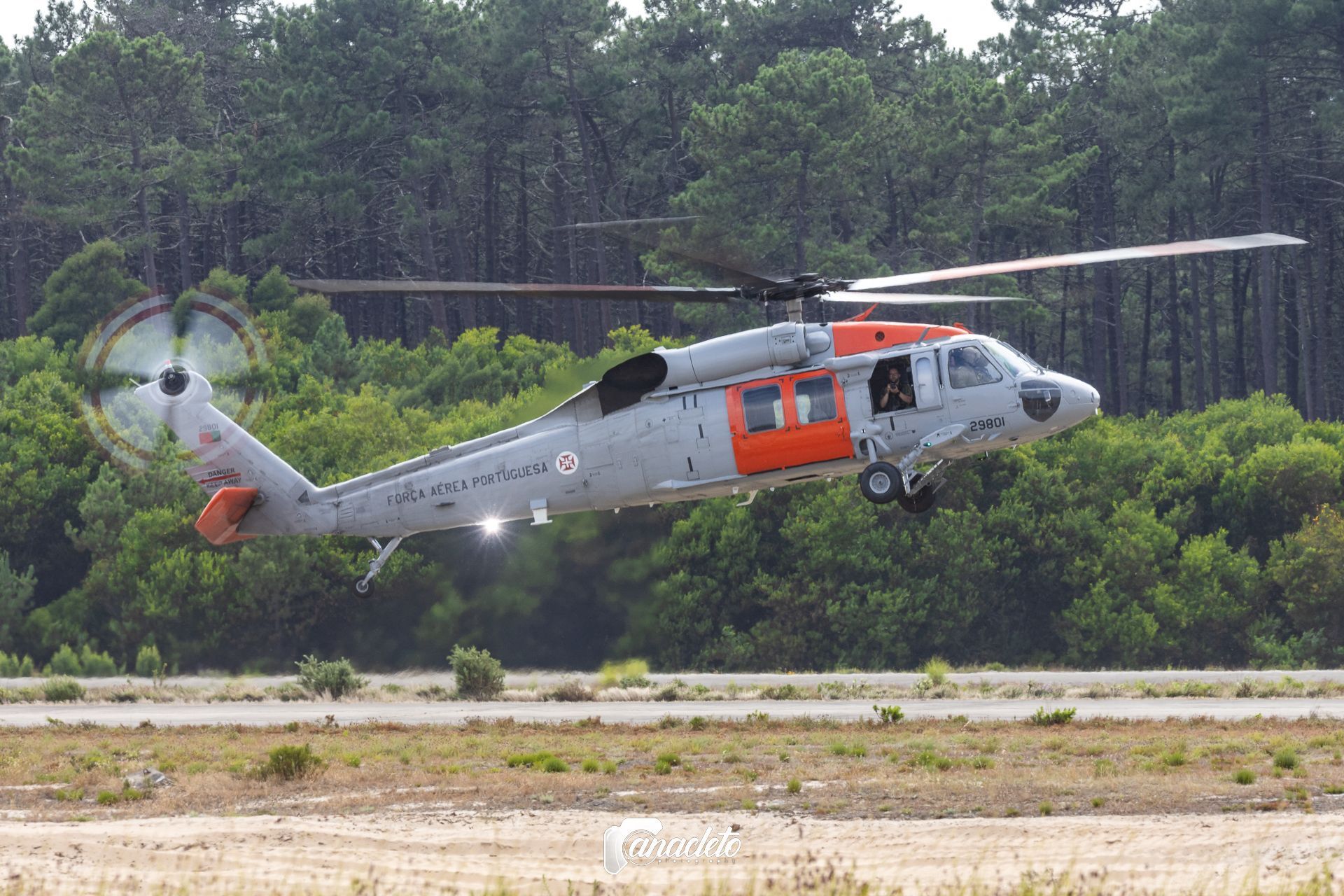4th FND CAtMec/ROU - Preparing to go to Romania
Military personnel from 32 units participate in the CARPHATOS START exercise at the Santa Margarida Military Field, in the preparation phase to join the 4ª Força Nacional Destacada CAtMec/ROU that will be deployed in Romania at the end of this year. In this exercise, various types of training are carried out, such as the Field Training Exercise and session on the Shooting Range.
Following the invasion of Ukraine by Russia and subsequent activation of the North Atlantic Treaty Organization (NATO) defense plans, it was decided to send a Company to Romania. This participation with a total of 200 military personnel translates into the creation of the 4ª Força Nacional Destacada of the CAtMec (Companhia de Atiradores Mecanizada), within the scope of NATO's “Enhanced Vigilance Activities” mission.
The group is made up of military personnel from the three branches of the Armed Forces and its preparation took place at Infantry Regiment No. 13, in Vila Real, with part of the preparation period taking place at the Santa Margarida Military Field.
The 4ª Força Nacional Destacada is made up of a mechanized infantry company, divided into three infantry platoons and a cannon section. These are joined by an anti-aircraft defense module, an intelligence module and a support detachment that guarantees the group all the administrative support necessary for its operations.
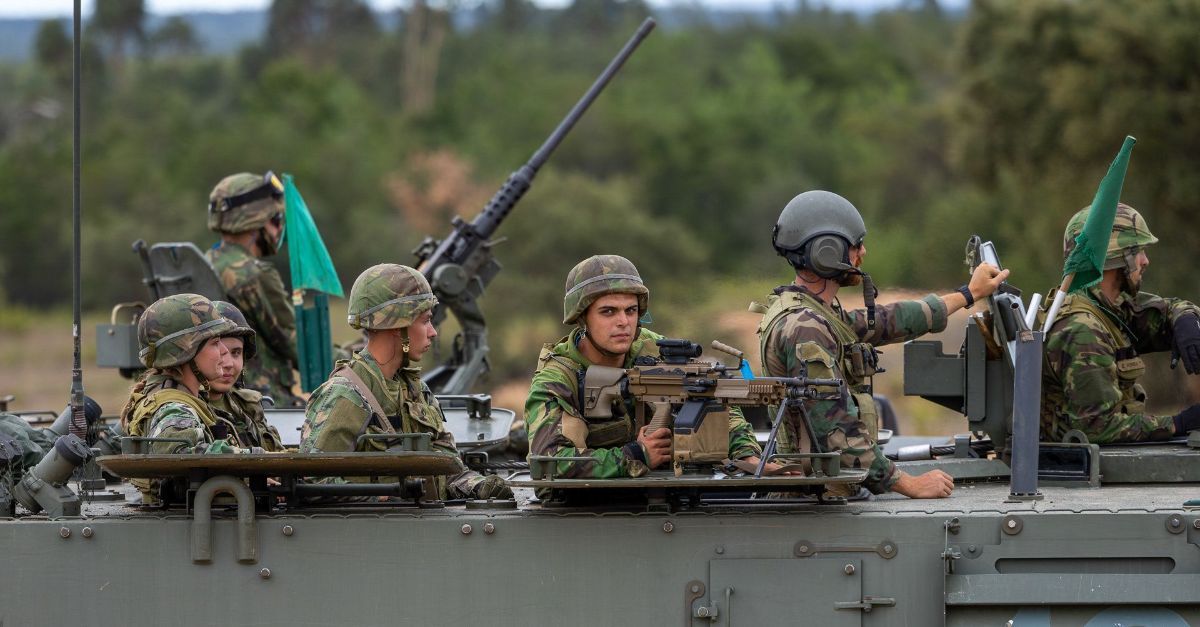
The anti-aircraft defense module's main mission is to secure airspace, defending ground forces from possible aerial threats. This module is also supported by a radar team, which monitors the airspace and, if any hostile aircraft appears, relays this information to the anti-aircraft defense team.
Anti-aircraft defense is guaranteed by a team of 3 elements, armed with the Stinger missile launcher system. This American-made system is known for being portable, short-range, of the "Fire and Forget" type. It is an infrared-guided surface-to-air missile. These 3 elements also use the VTLB VAMTAC ST5 vehicle to guarantee their high mobility.
The radar team consists of 4 elements, 3 of which guarantee the assembly of the AN/PPQ-2 PSTAR (Portable Search and Target Acquisition Radar) system while one guarantees the security perimeter.
During the Field Training Exercise, the forces carried out several ambush response drills where, after an attack on a Pandur II 8x8 ICV armored vehicle, the soldiers inside leave, creating a security perimeter. After initiating contact with hostile forces, they carry out flanking maneuvers in order to eliminate the threat.
In other exercises, where more Pandur II vehicles were involved, they simulated the response to ambushes on a column of vehicles. In these maneuvers, after the first vehicle is hit and the soldiers inside leave to create a security perimeter, the remaining Pandur IIs in the column move to flanking positions so that their teams can advance on the hostile position, eliminating the shooters. After ensuring the safety conditions of the location, the teams regroup and board the vehicles again, continuing with the mission.
They also trained the correct response to attacks by anti-vehicle mines, how they should position the vehicles in a way they guaranteed their safety and can quickly evacuate the wounded.
The cannon section is equipped with a Pandur II 8x8 Infantry Fighting Vehicle (IFV). This version was designed to guarantee greater firepower capacity, maintaining all the principles and characteristics inherent to the base ICV and RWS versions. It is armed with a 30mm automatic cannon, with stabilization and automatic tracking system, a 7.62mm coaxial machine gun and a 7.62mm machine gun located on top of the turret.
The presence of this vehicle in a Pandur II ICV column is extremely important, as it guarantees a fire capacity and “more muscular” response to any contact with hostile forces.
During the preparation phase, this section carried out maneuvering and firing training.
In order for the forces to be as well prepared as possible with their weapons, several shooting sessions were held. The soldiers practiced shooting with the .50 caliber Browning M2 heavy machine gun and the 5.56 mm and 7.62 mm FN MINIMI light machine guns. In these training sessions, “Fire & Move” movements were simulated, where while a Pandur vehicle and its garrison provided covering fire, the other vehicle repositioned itself and so on.
The soldiers also had the opportunity to practice fire with the Carl Gustav multipurpose portable anti-tank recoilless cannon. The Carl-Gustaf system is highly versatile as a large-caliber portable weapon, largely due to the fact that it can fire various types of ammunition that can be decisive in specific situations, ranging from anti-armor to adjustable anti-personnel (with airburst), to ammunition against fortified areas and grenades for other special situations such as; smoke and lighting.
The 40mm FN40GL grenade launcher was also another type of weapon used in training. The soldiers initially practiced with anti-personnel grenades and later with HE grenades. They also had shooting sessions with the SCAR-L and H rifles and the Glock 17 pistol.
See more photos here:
